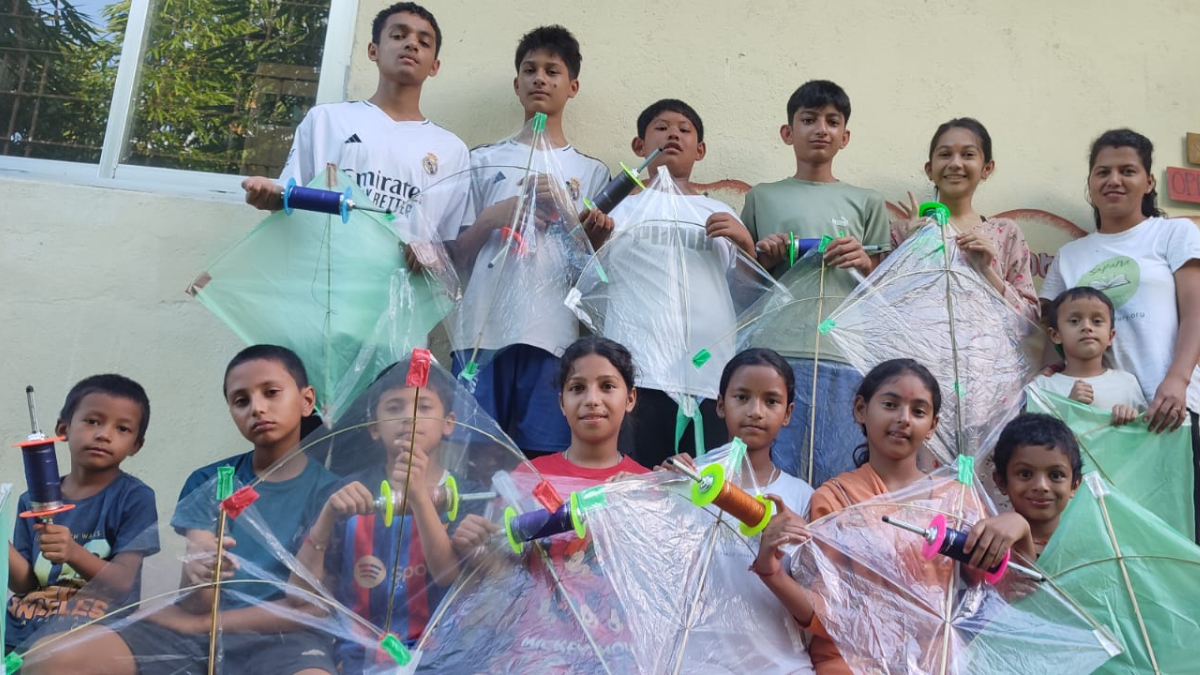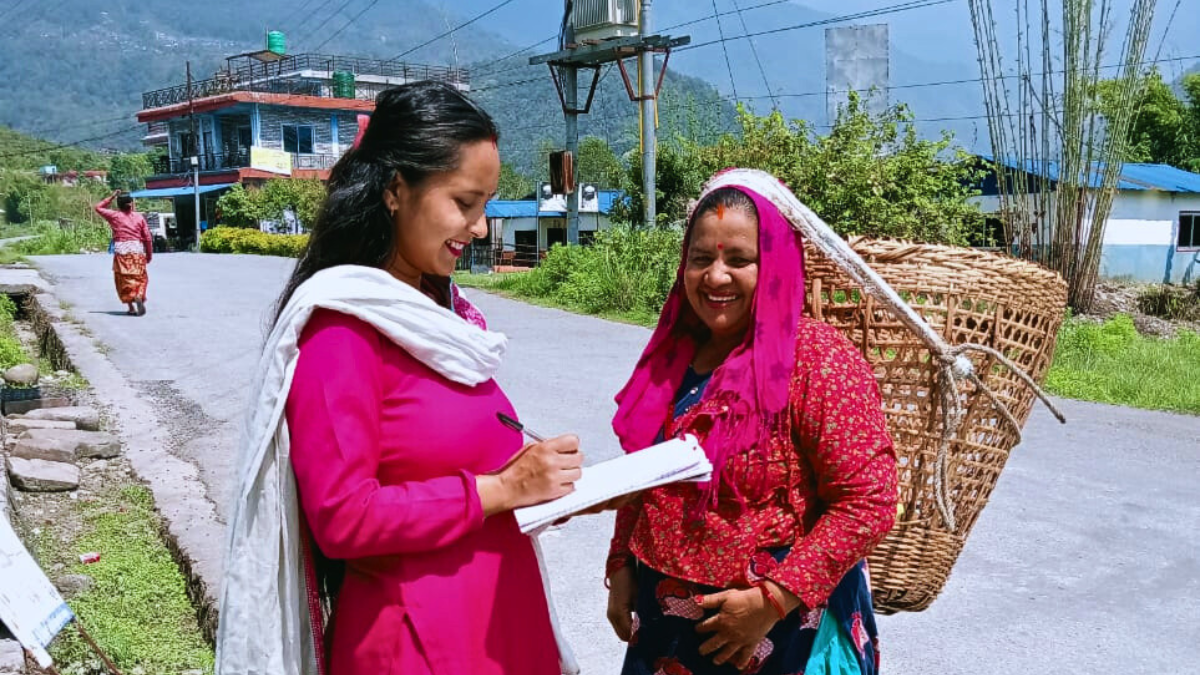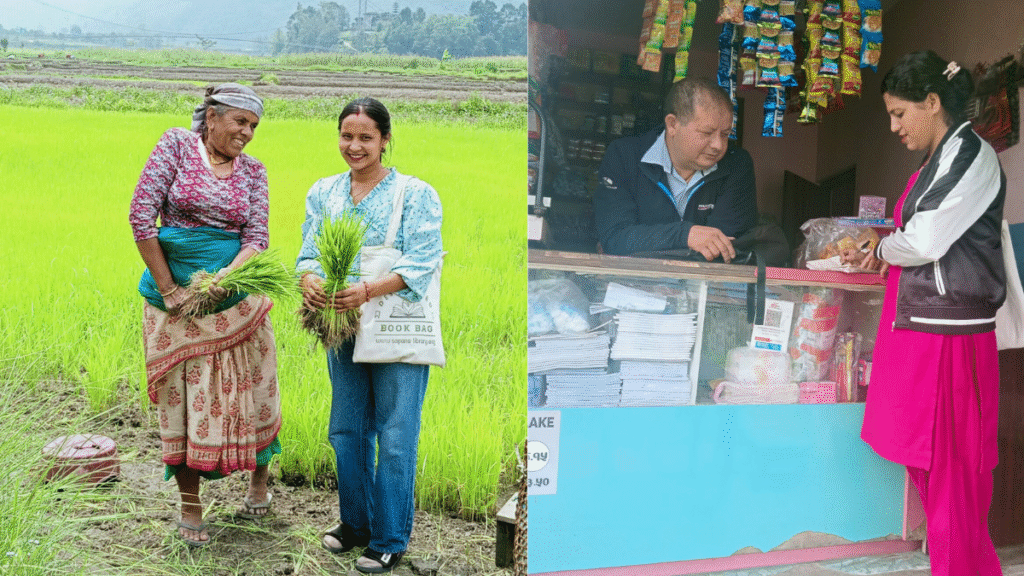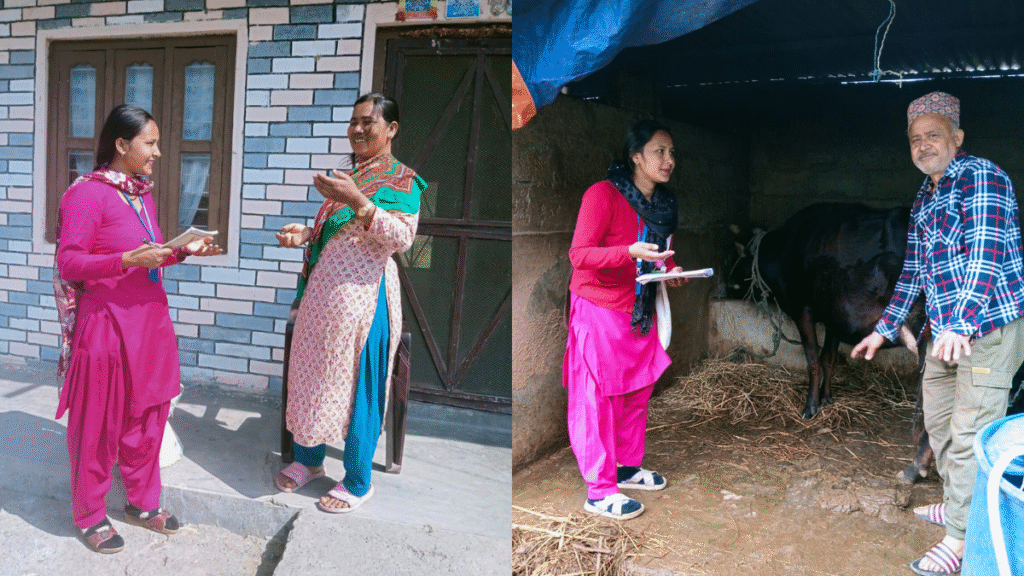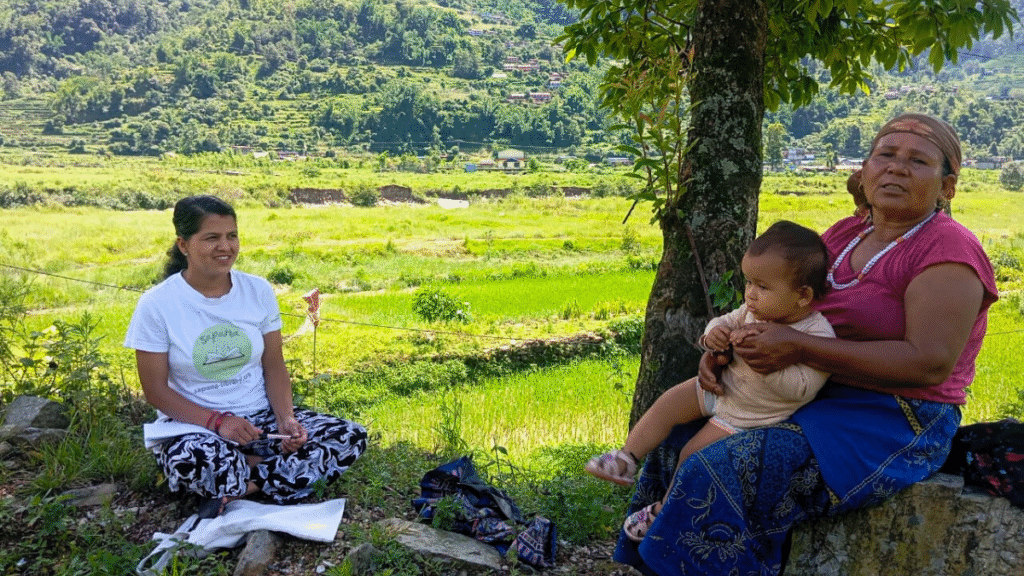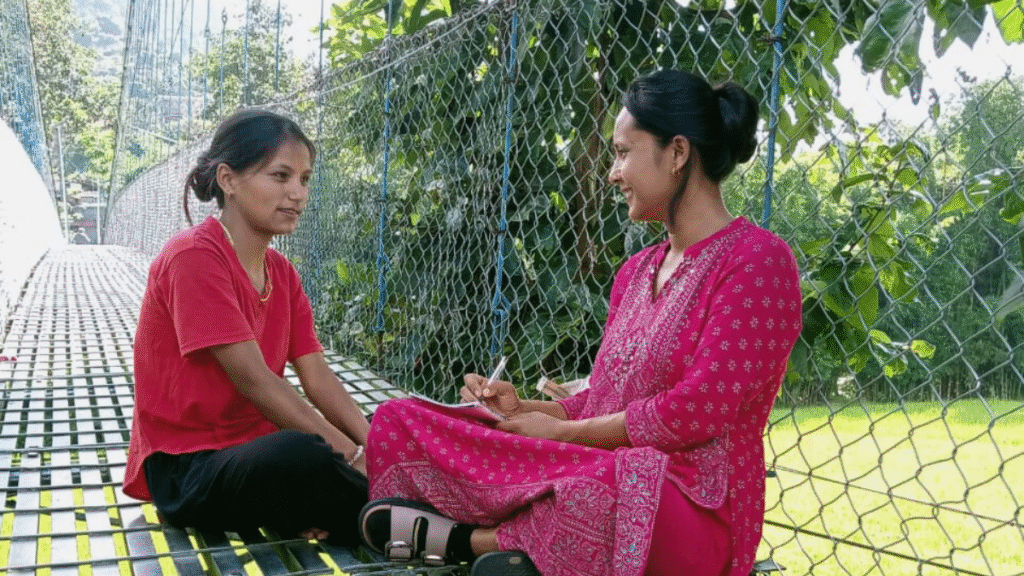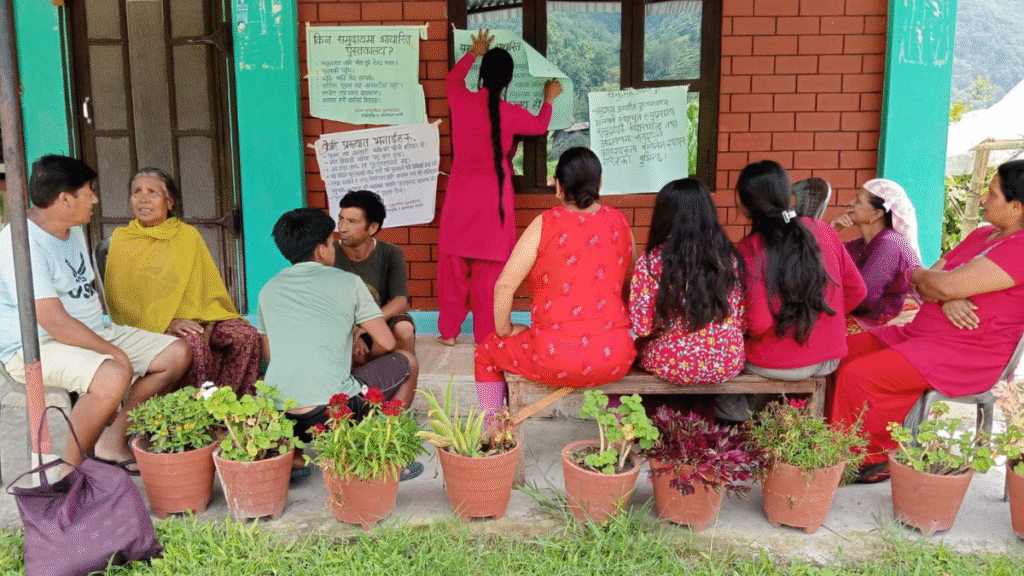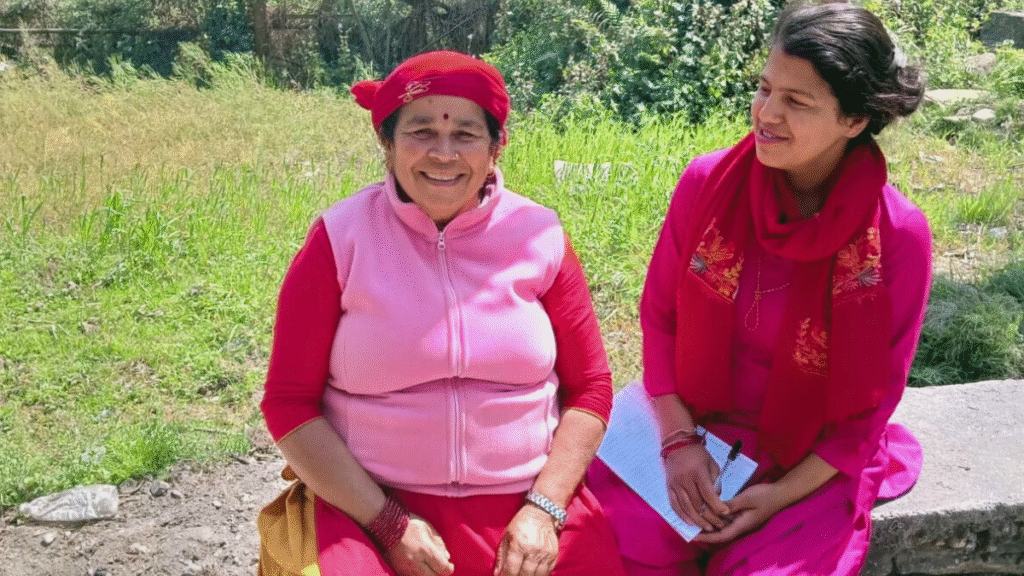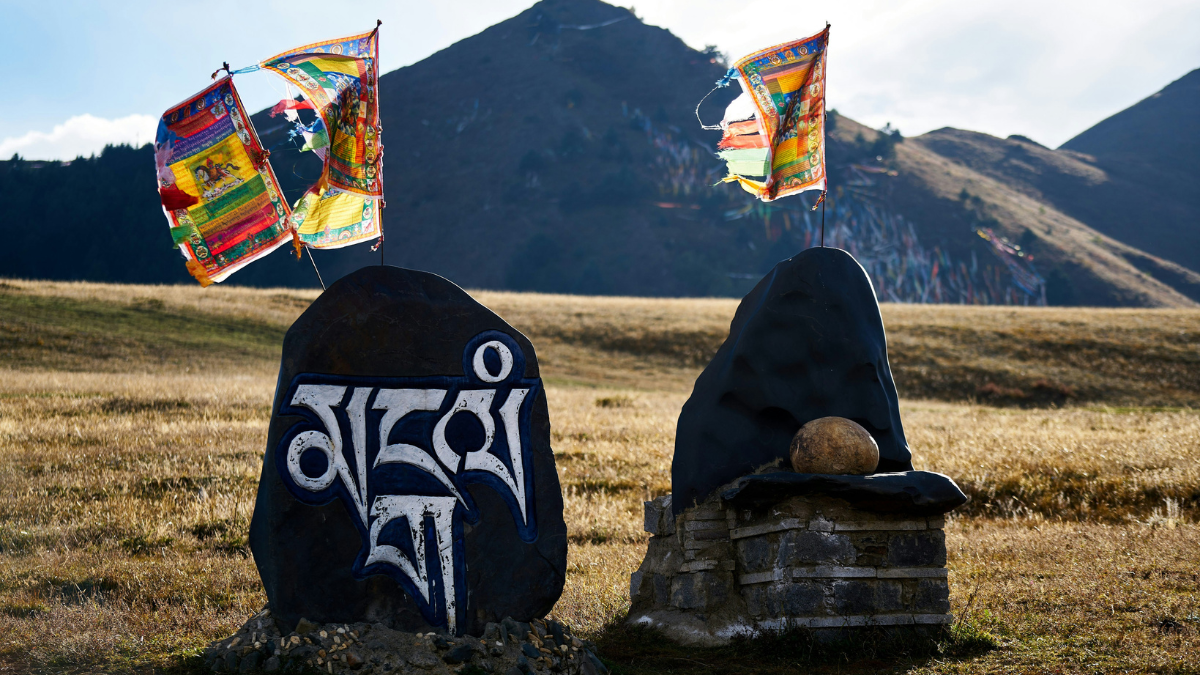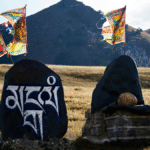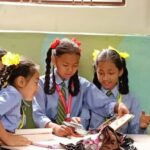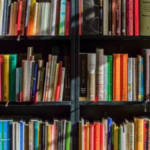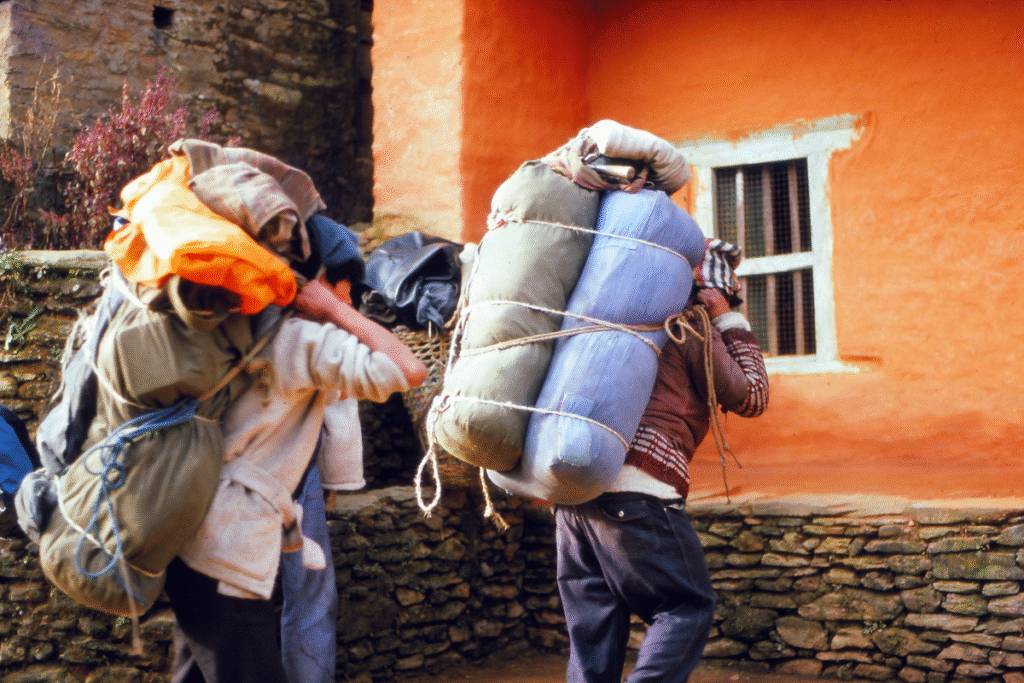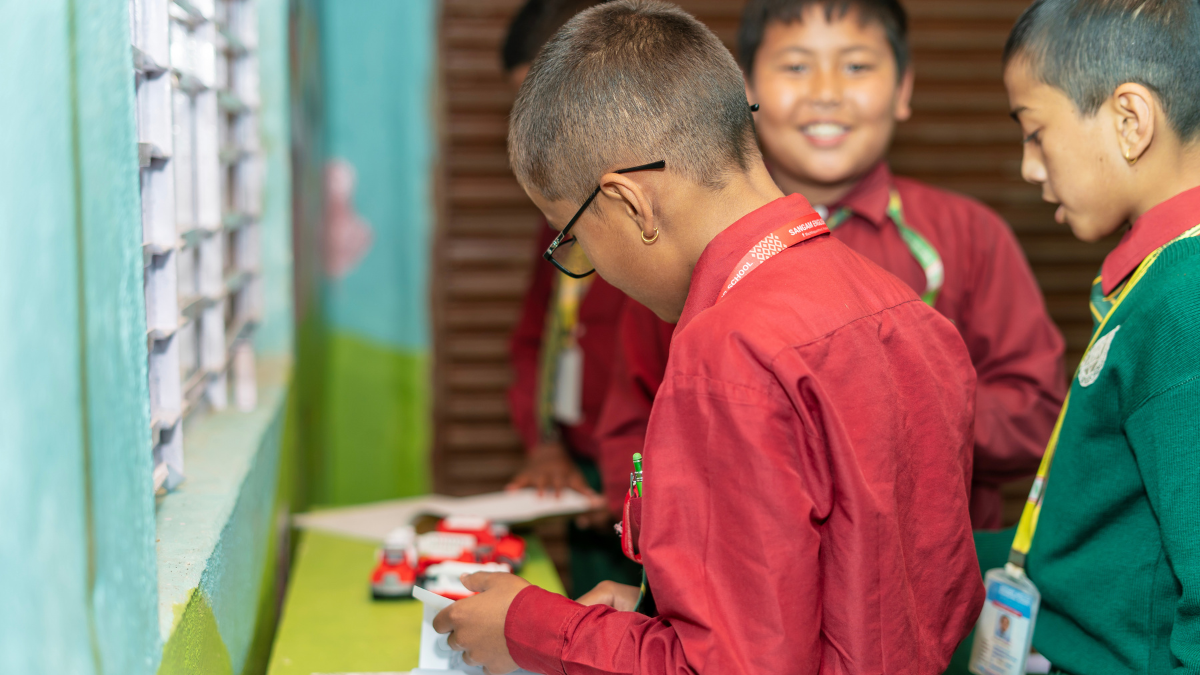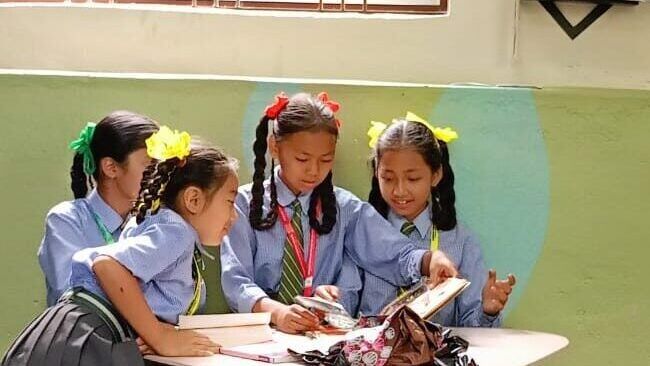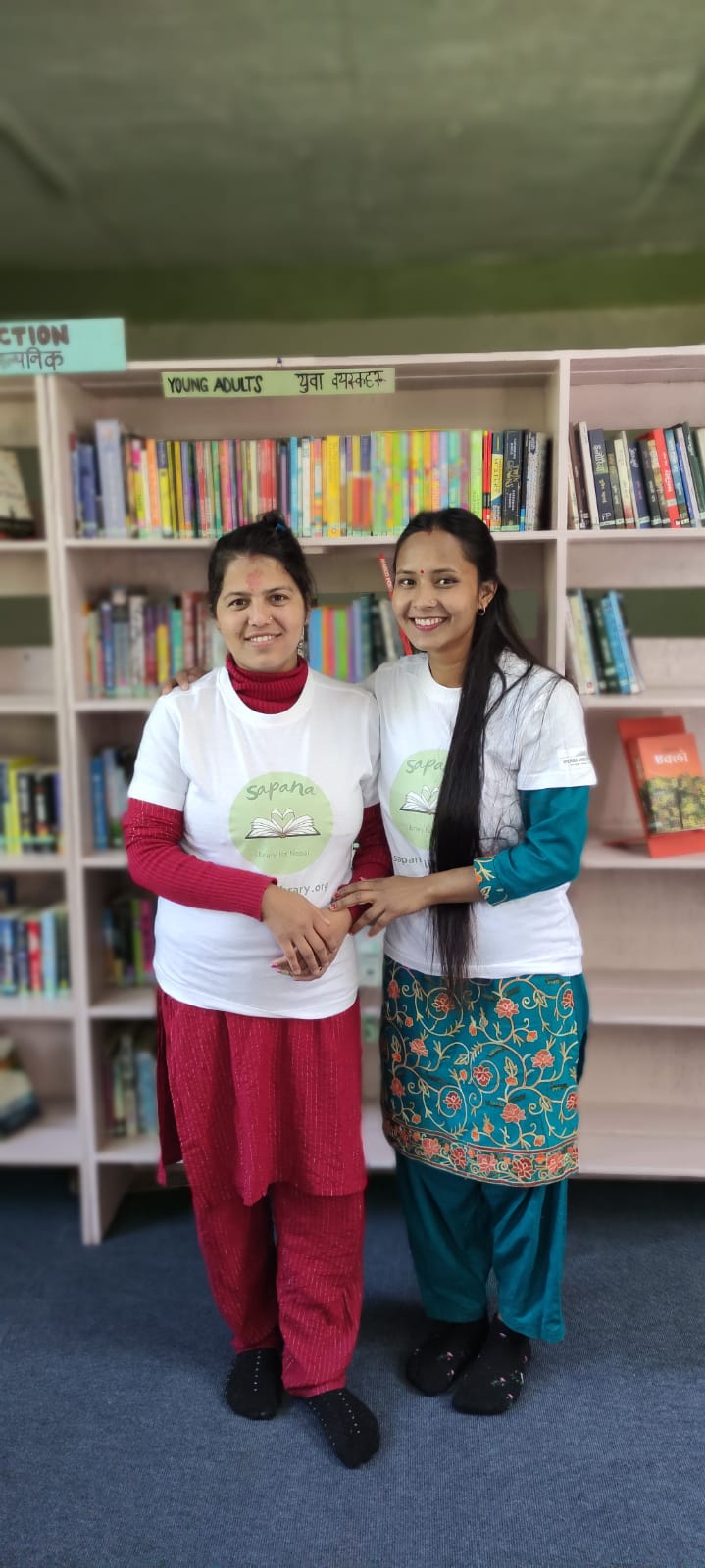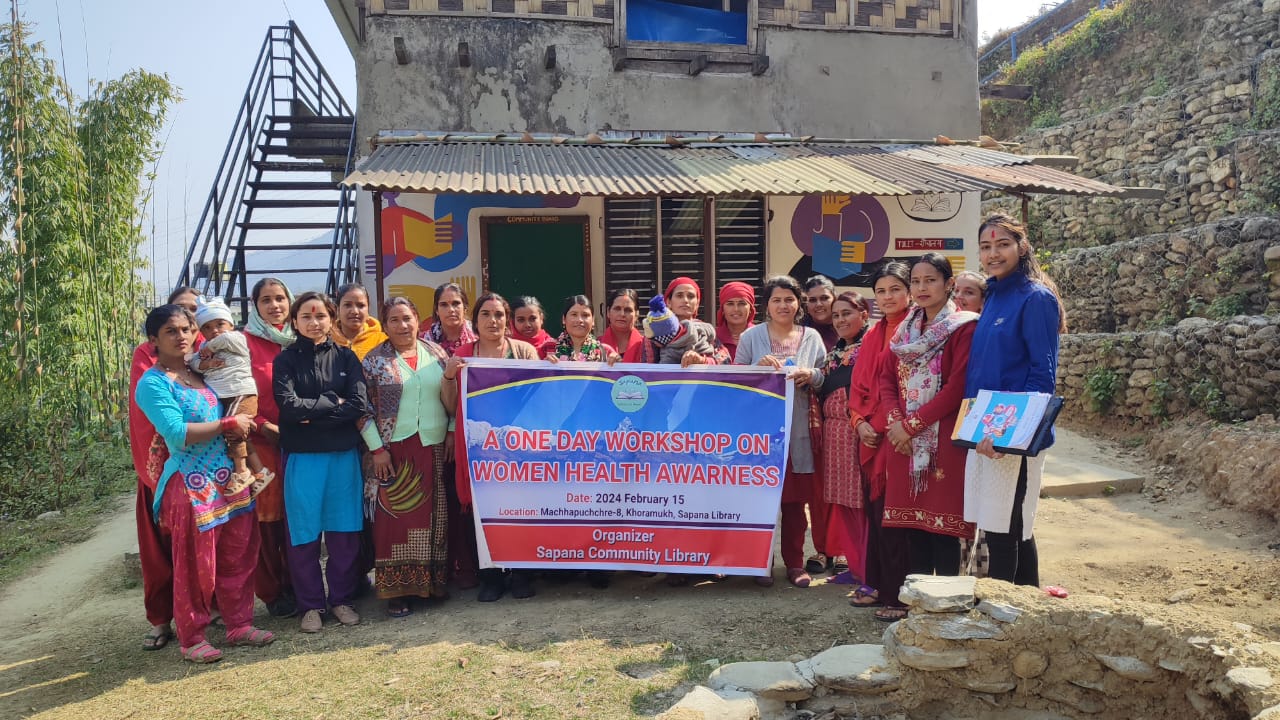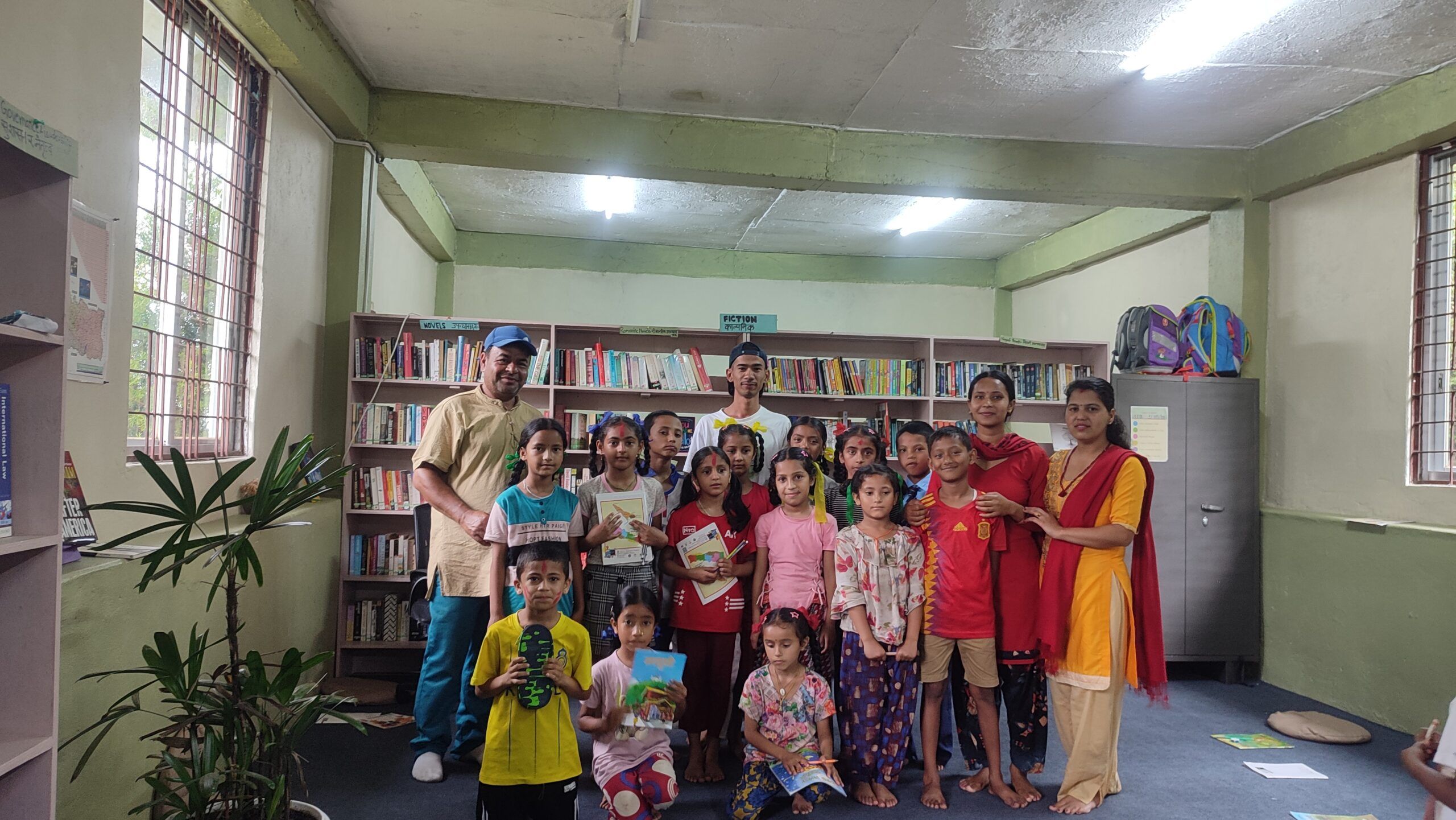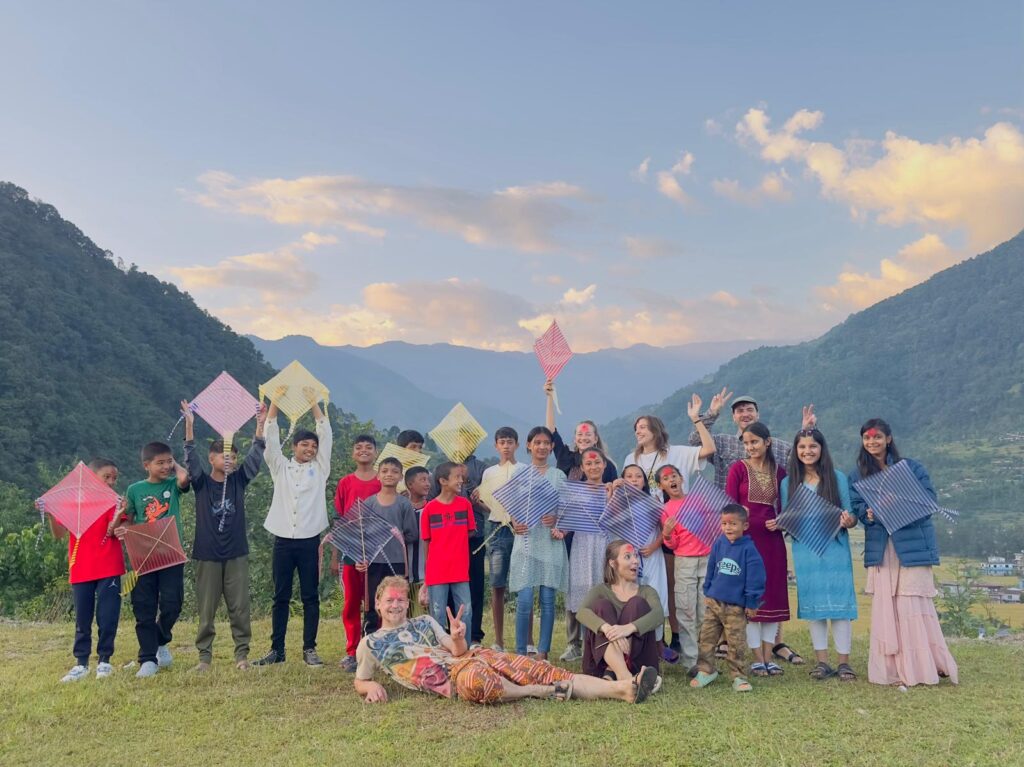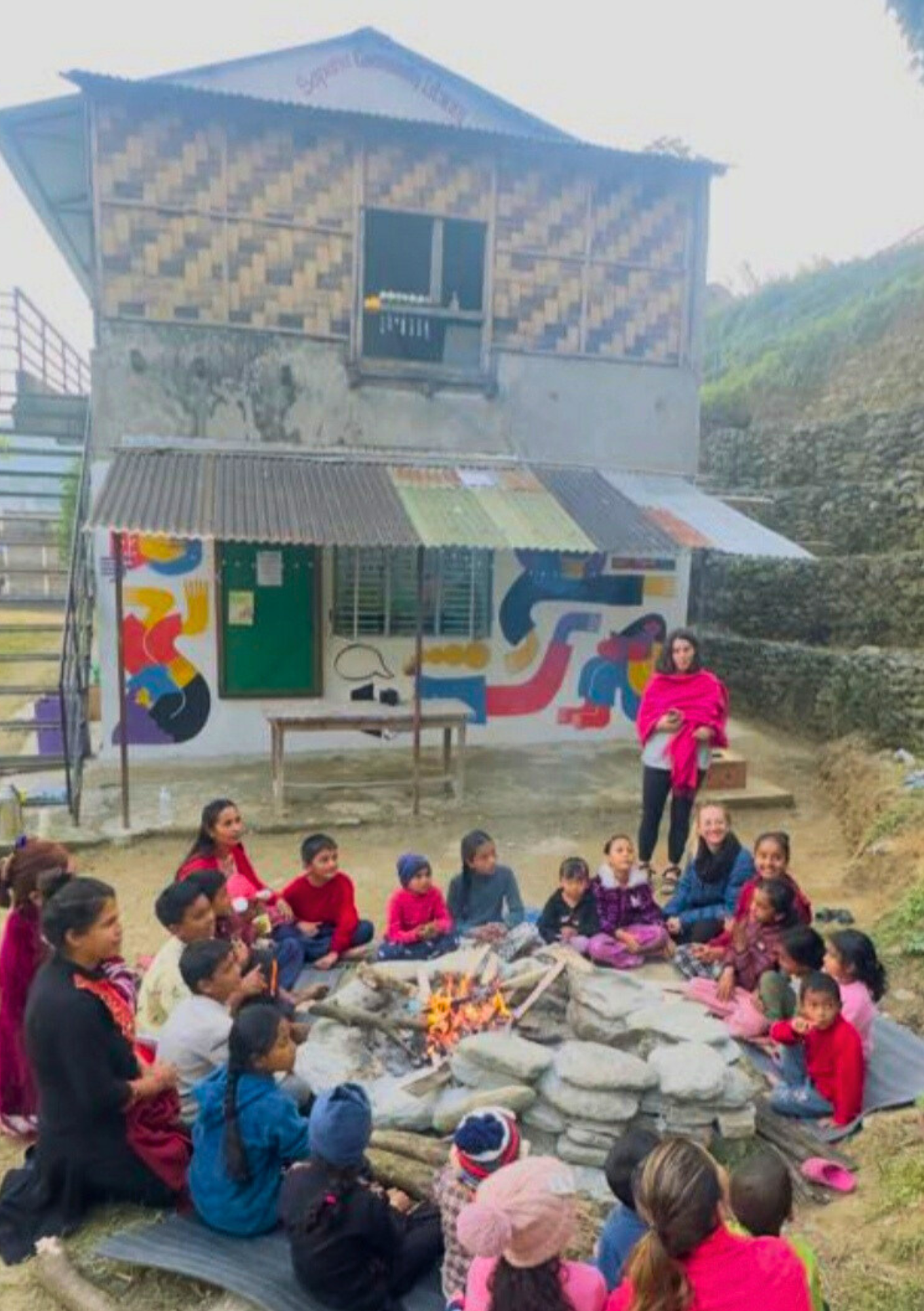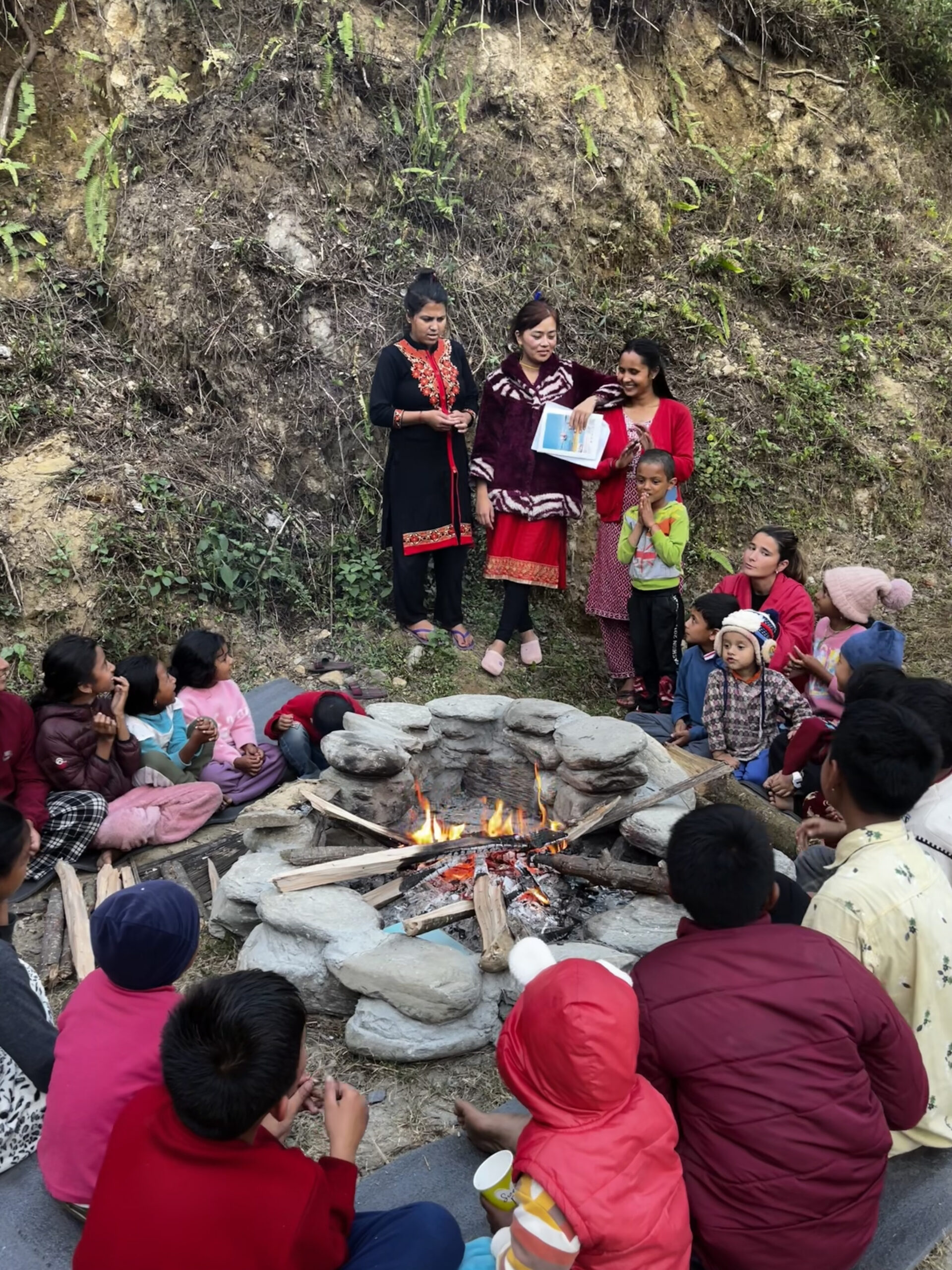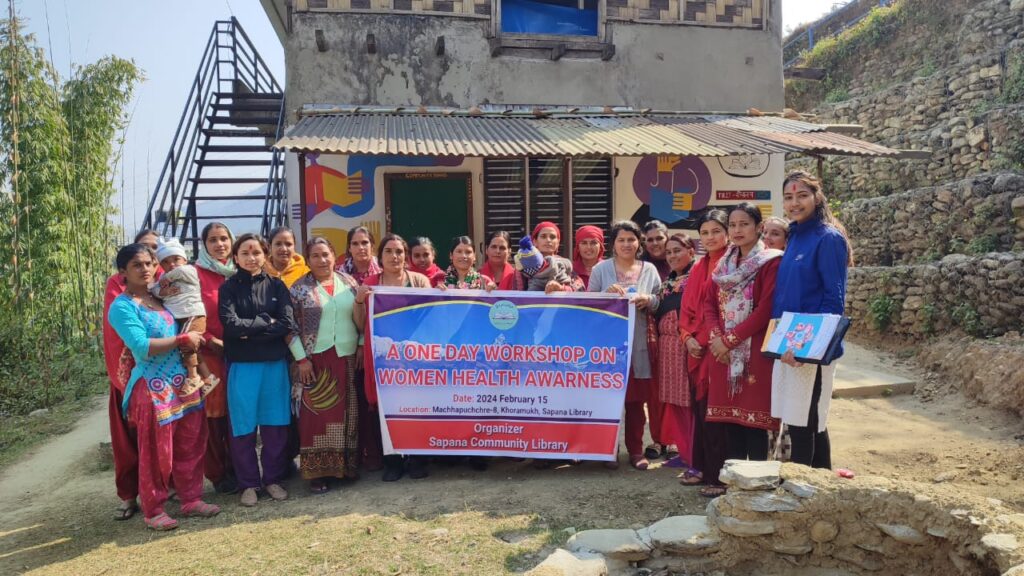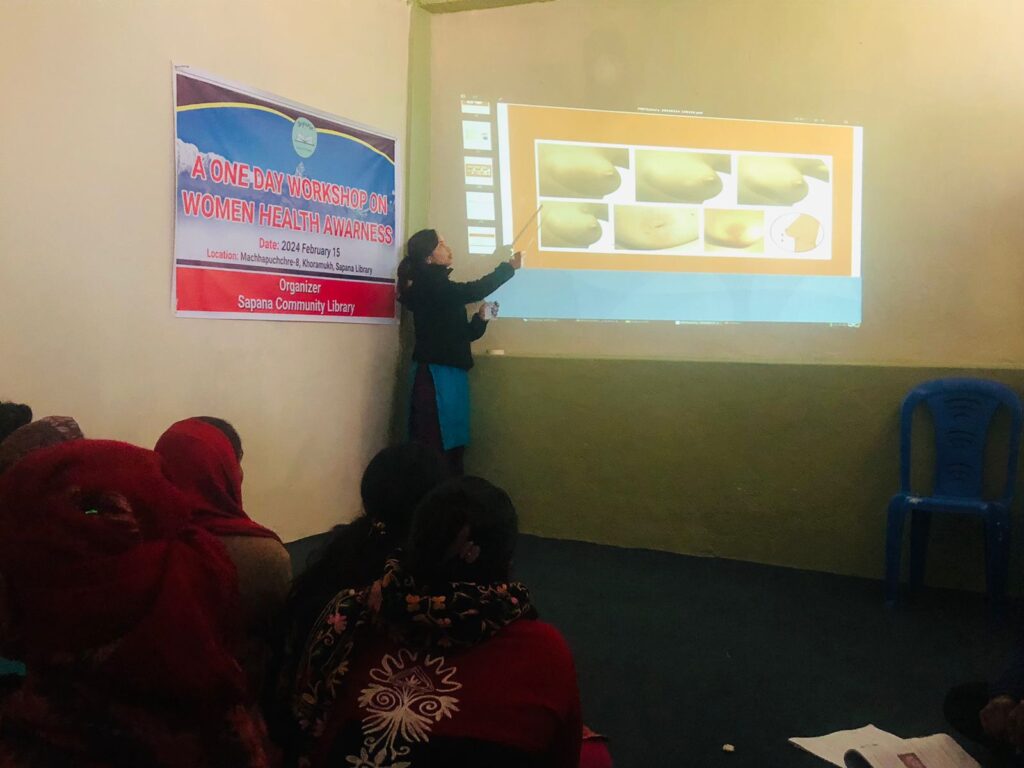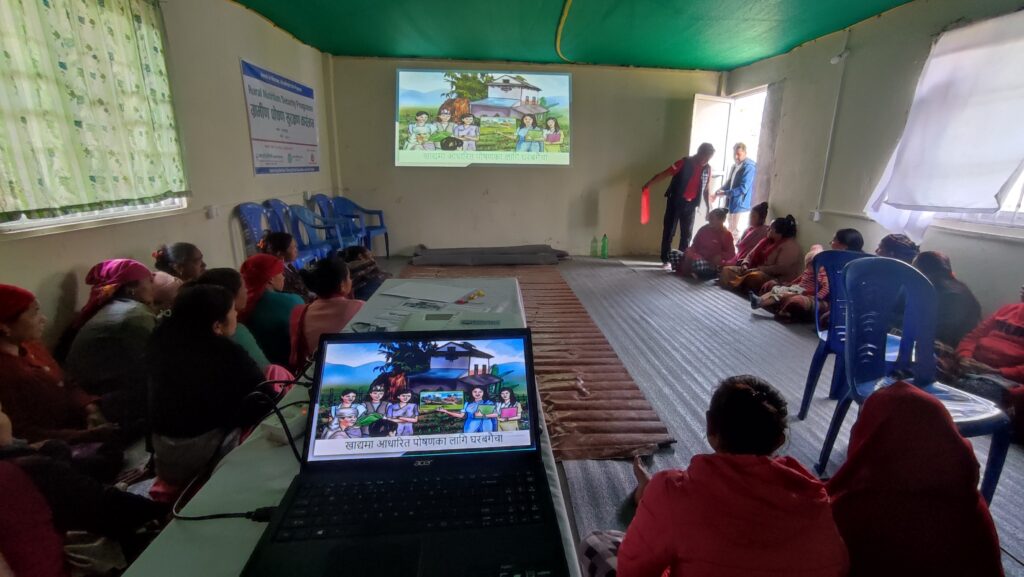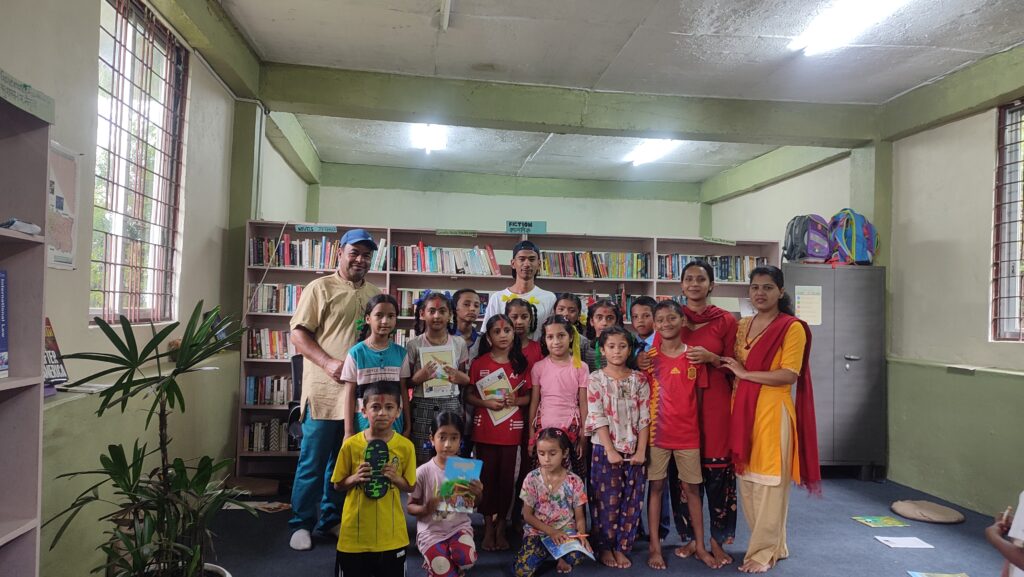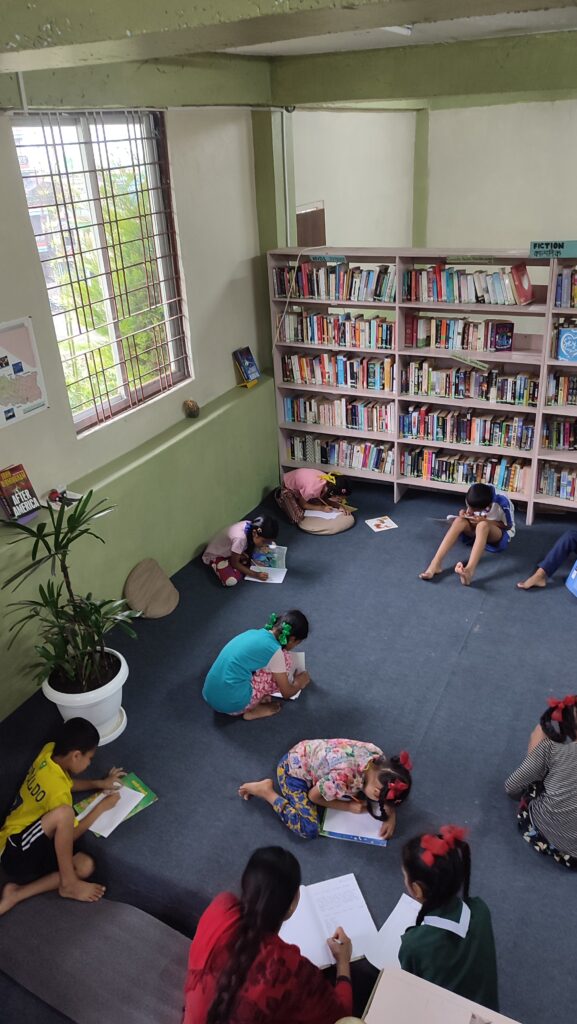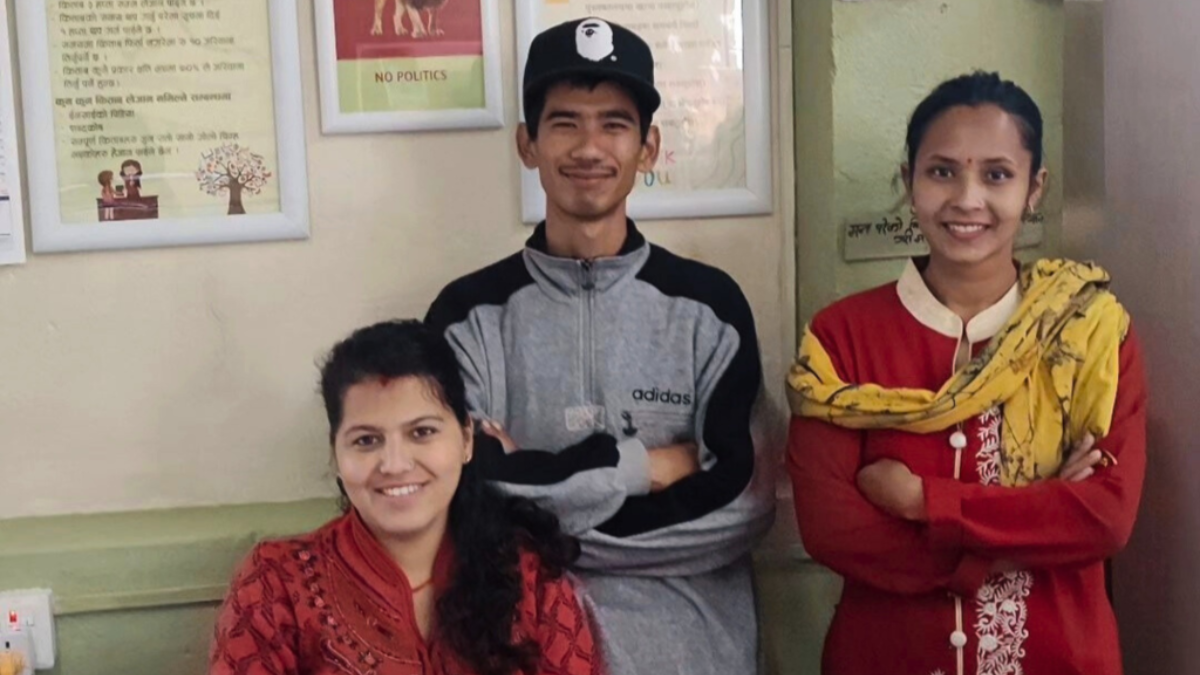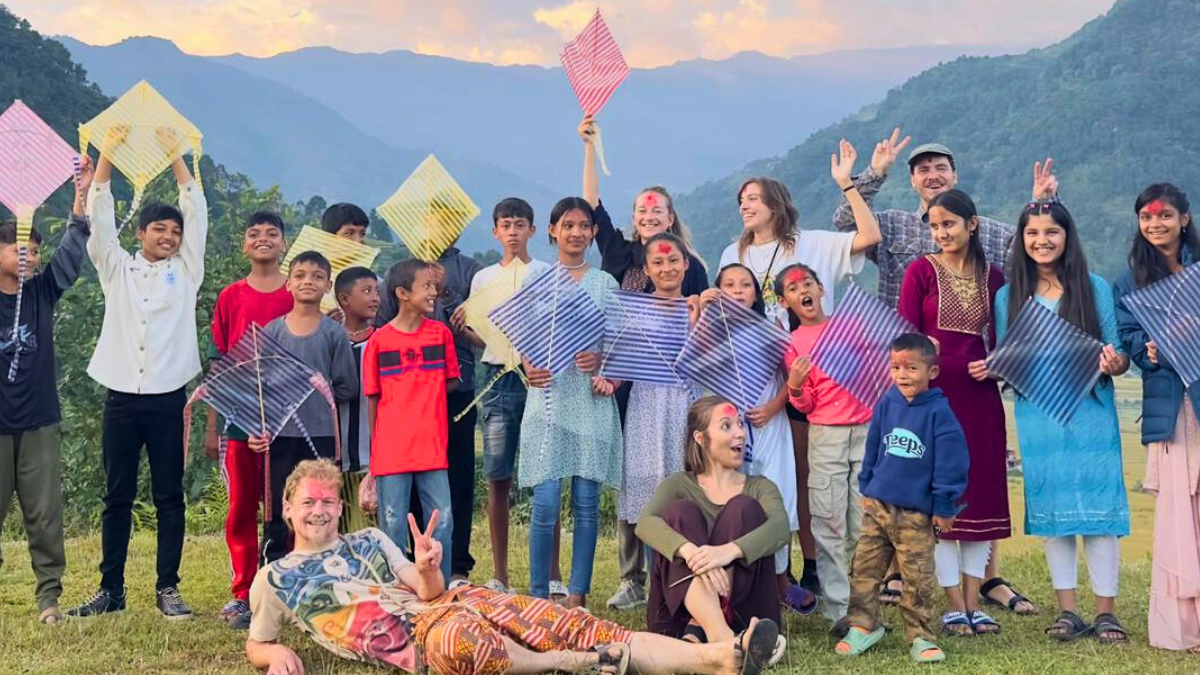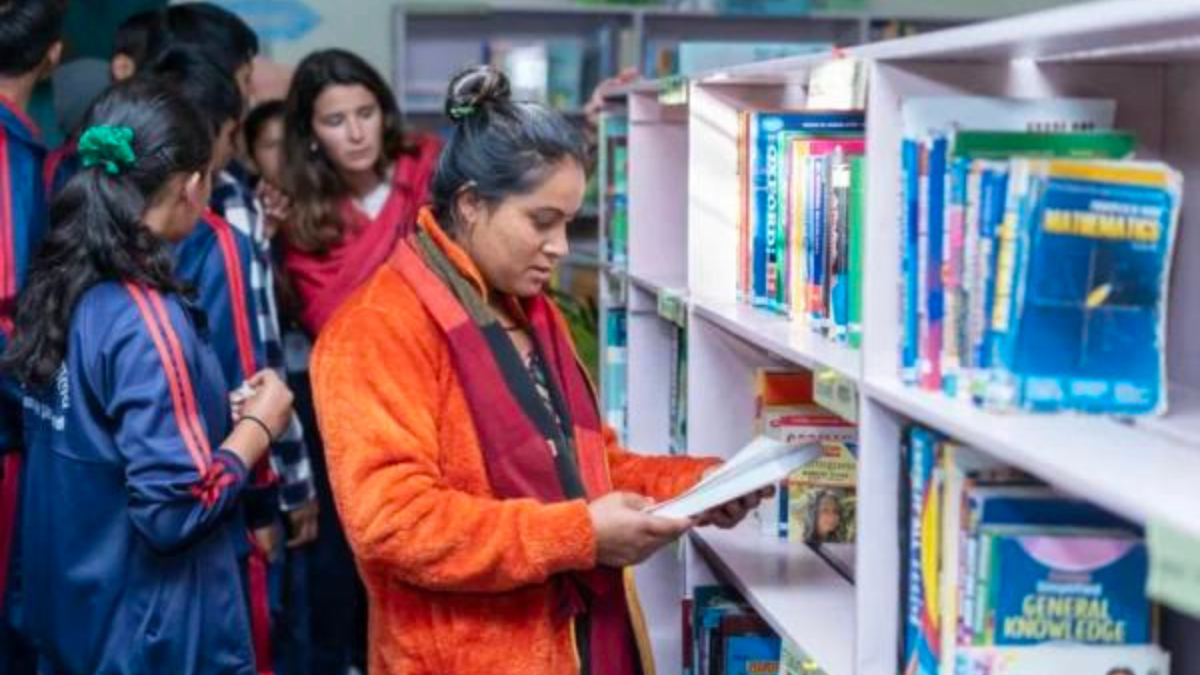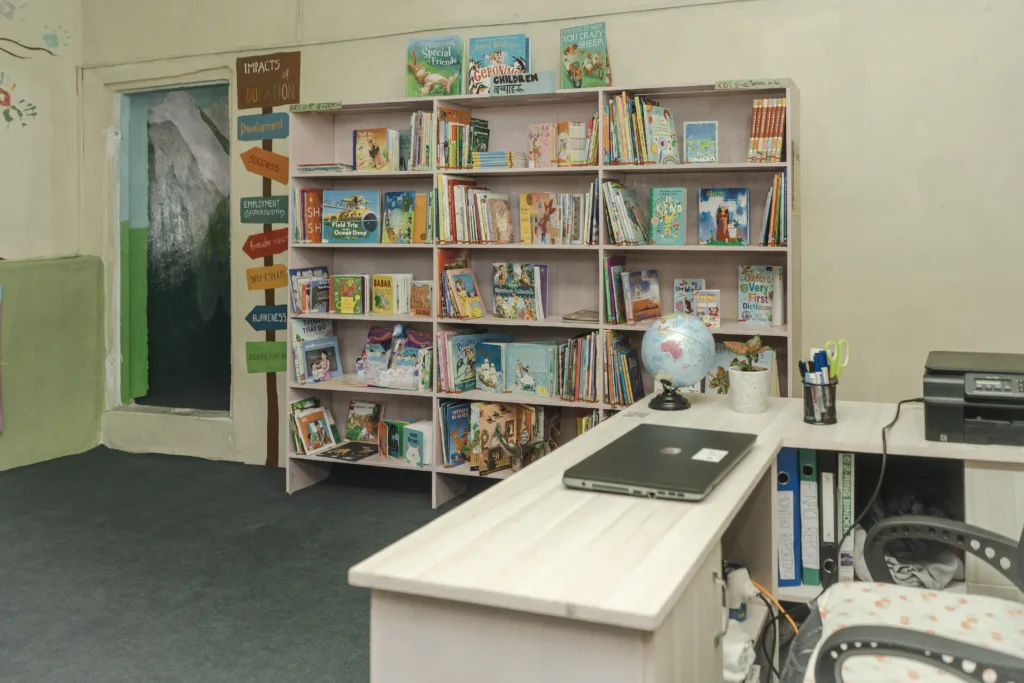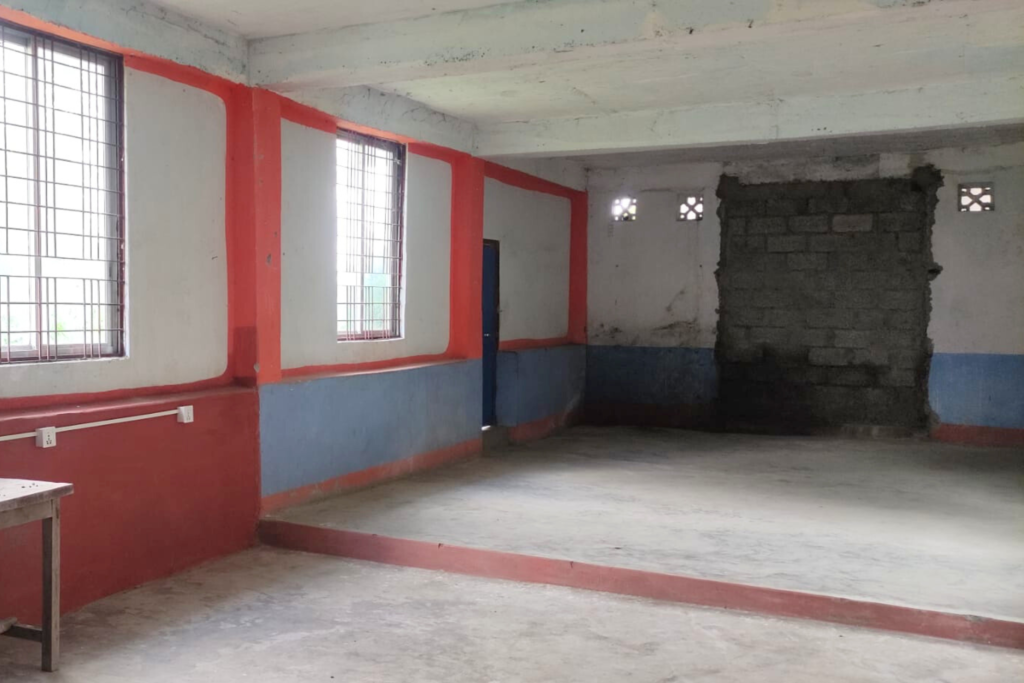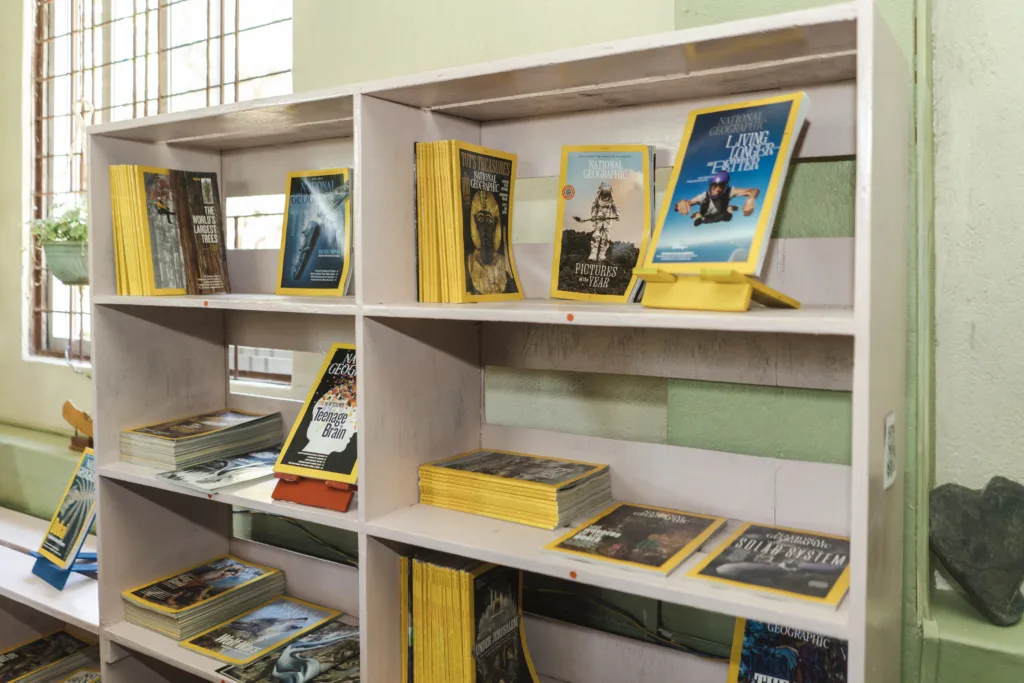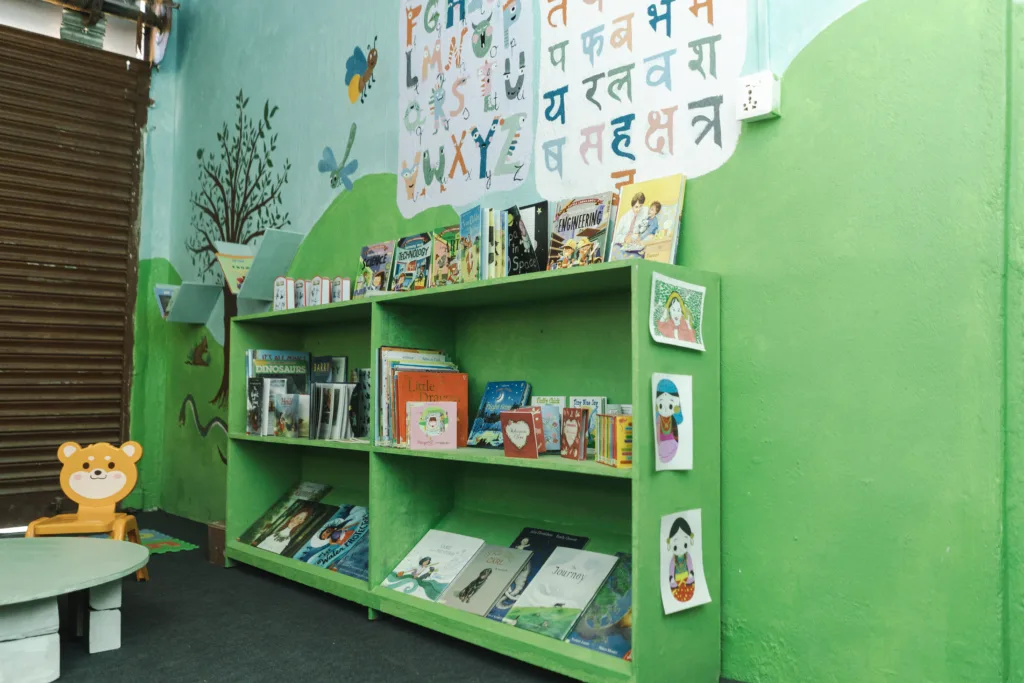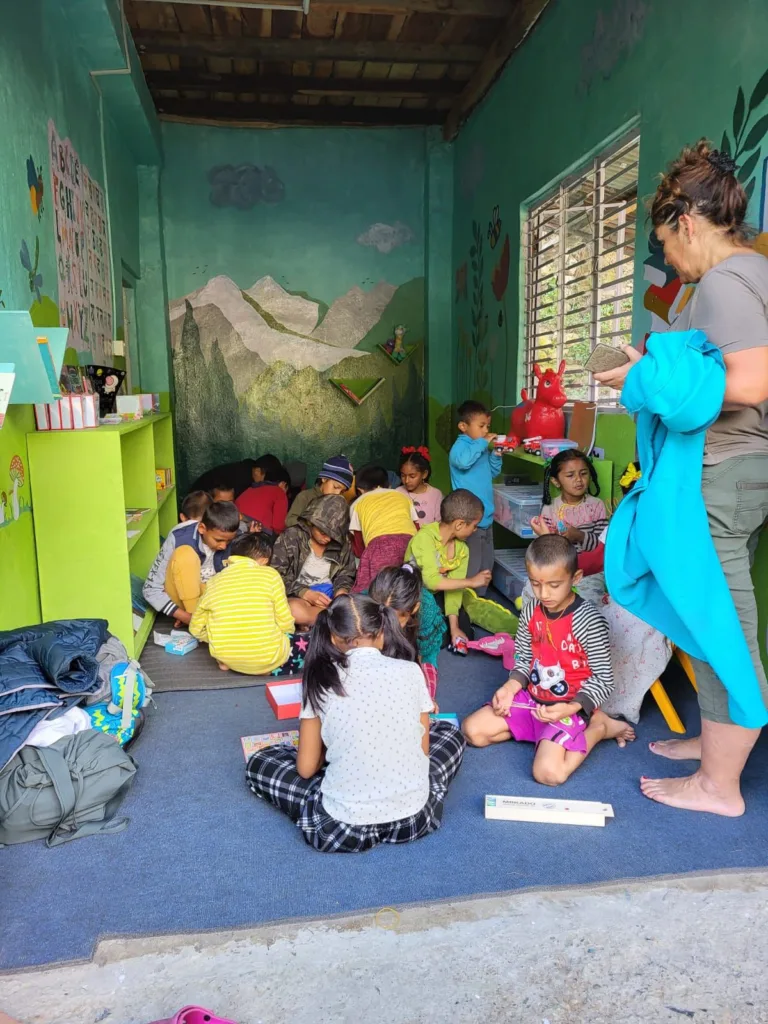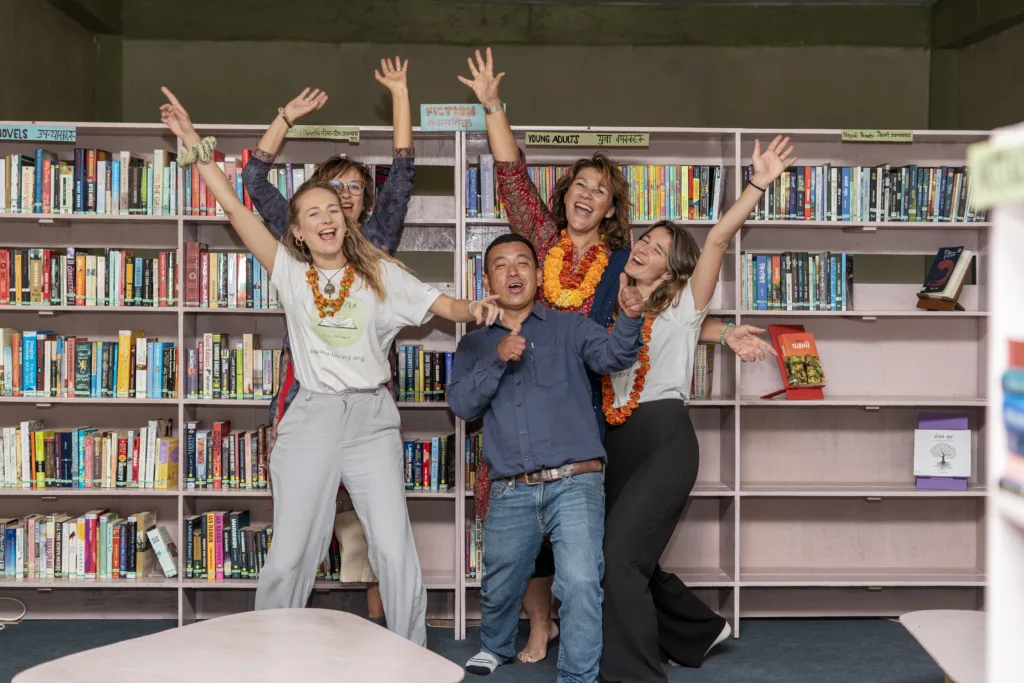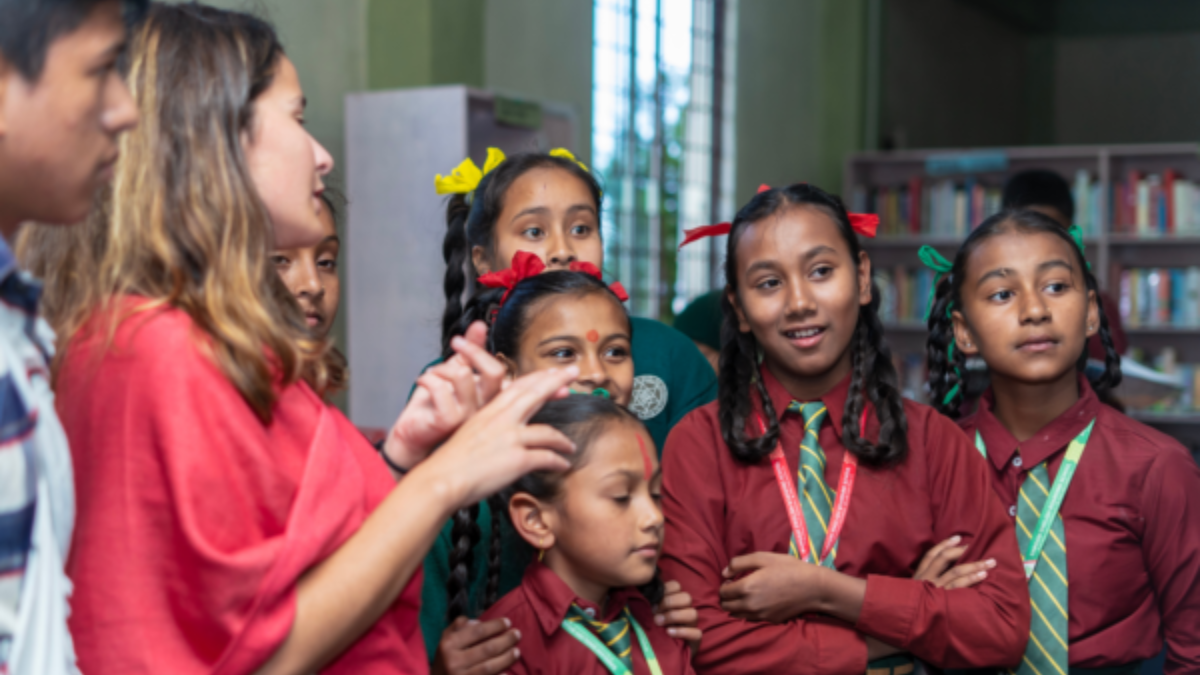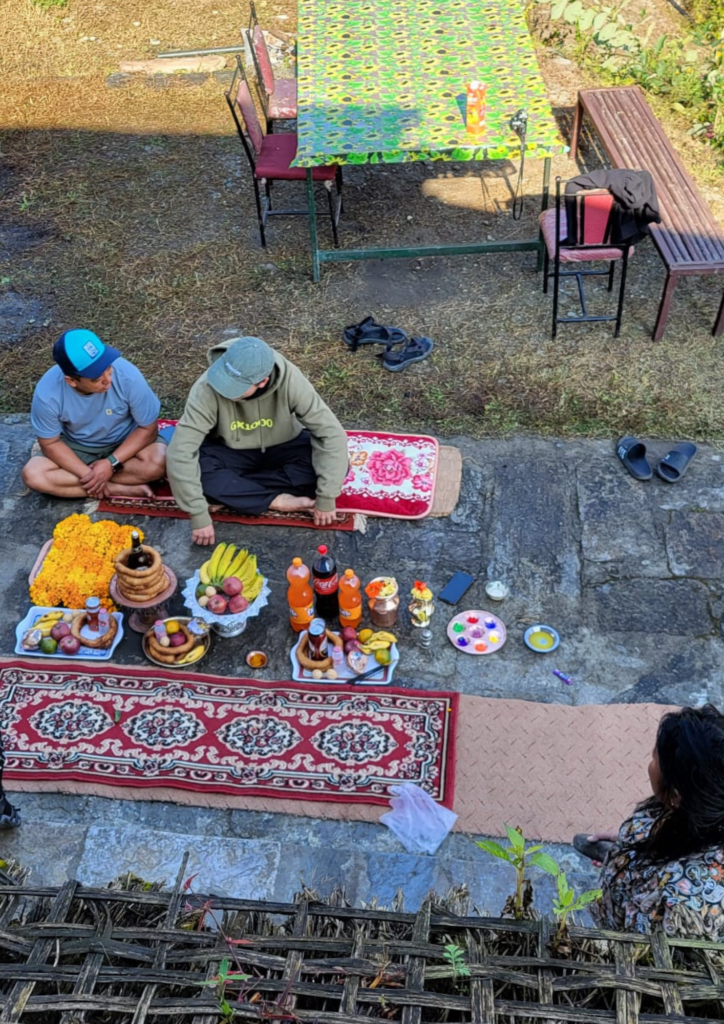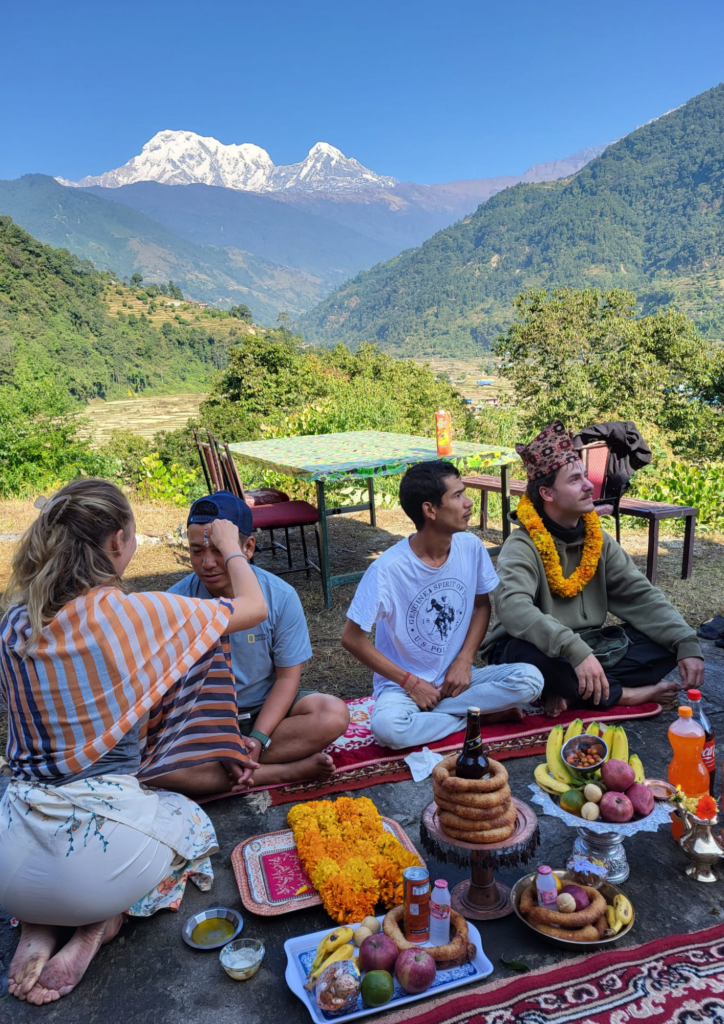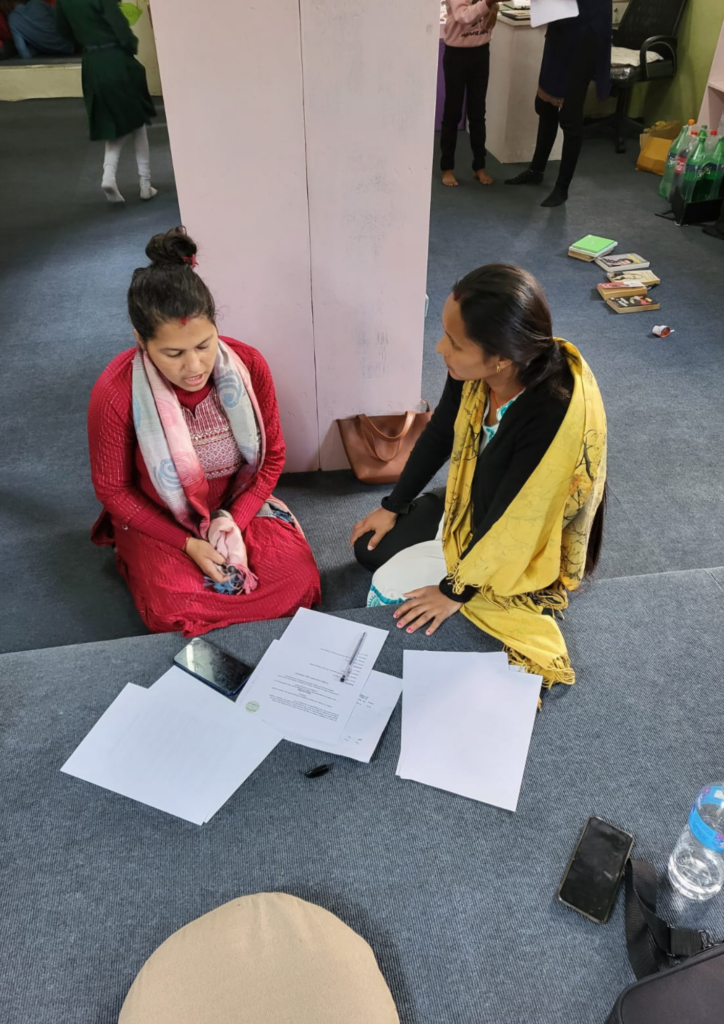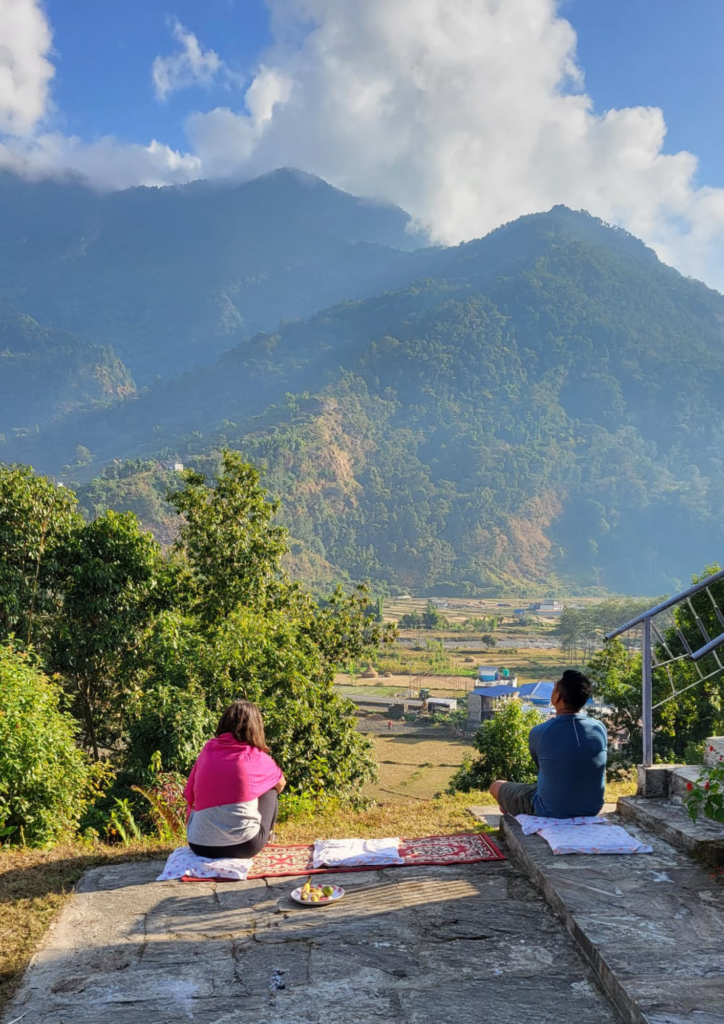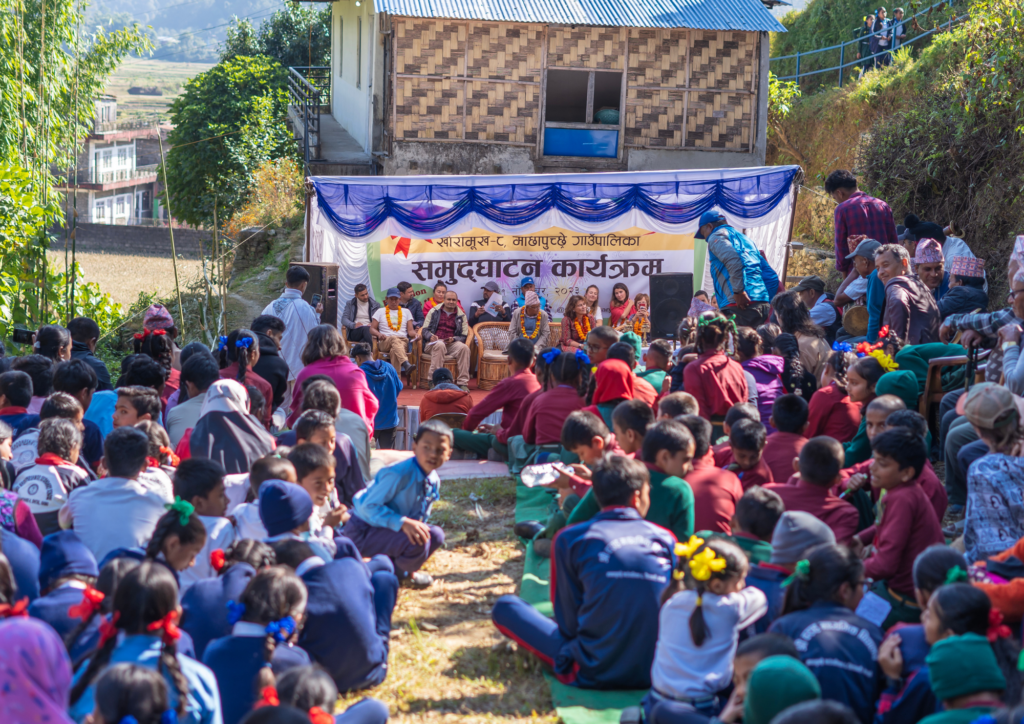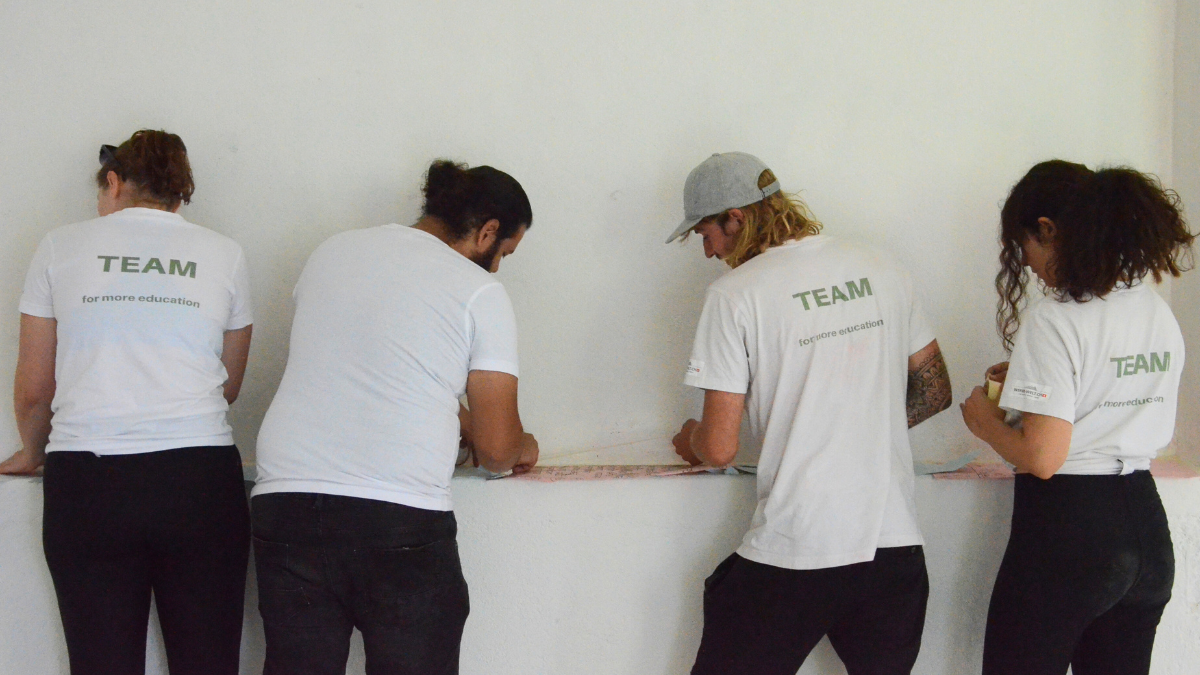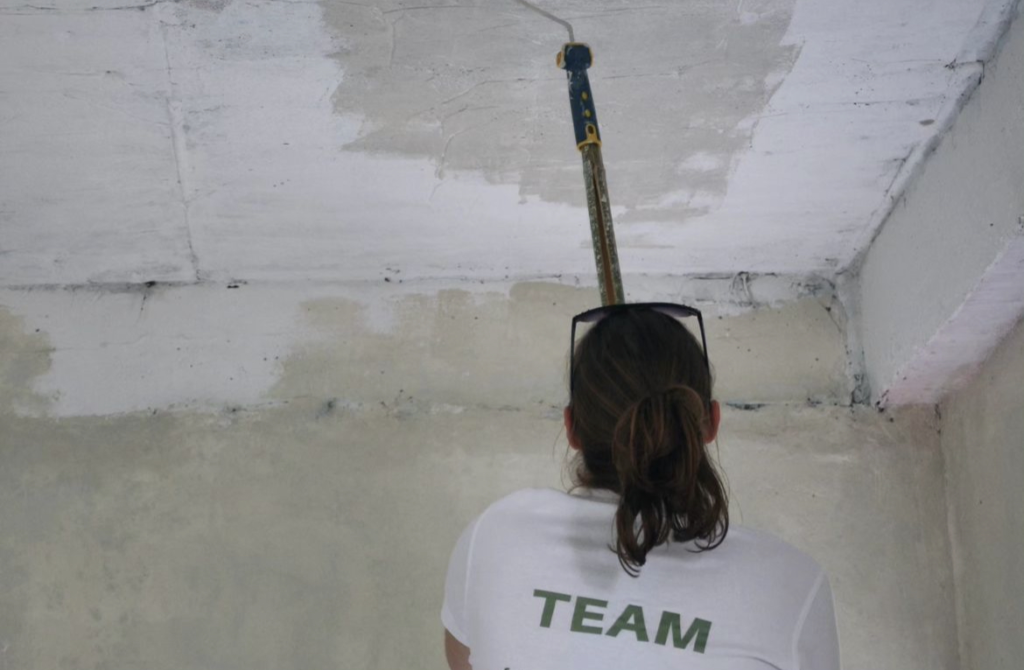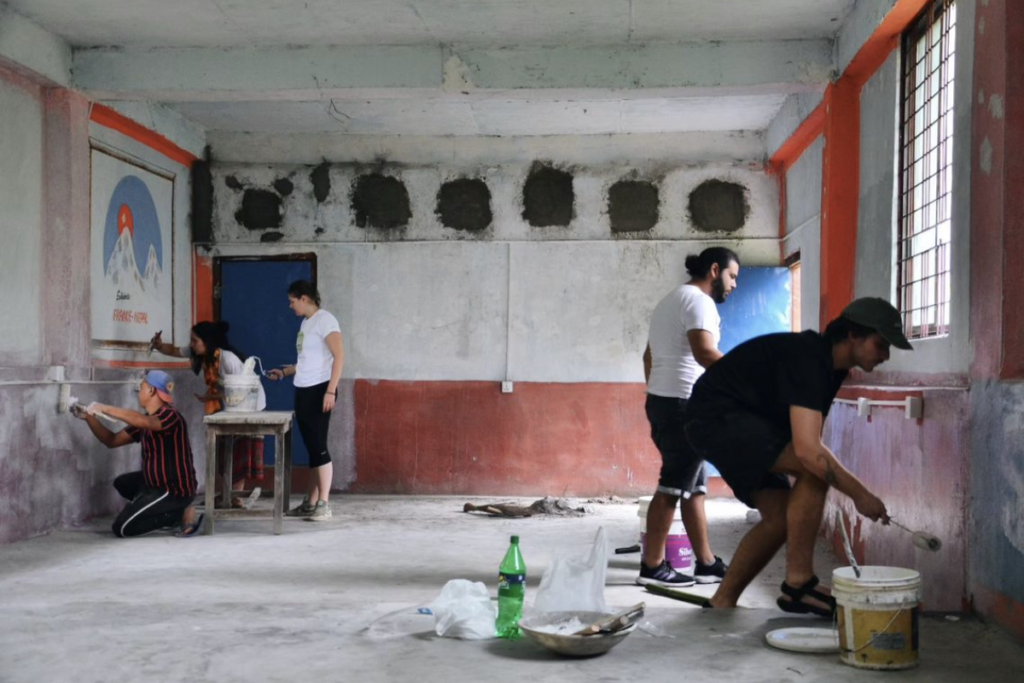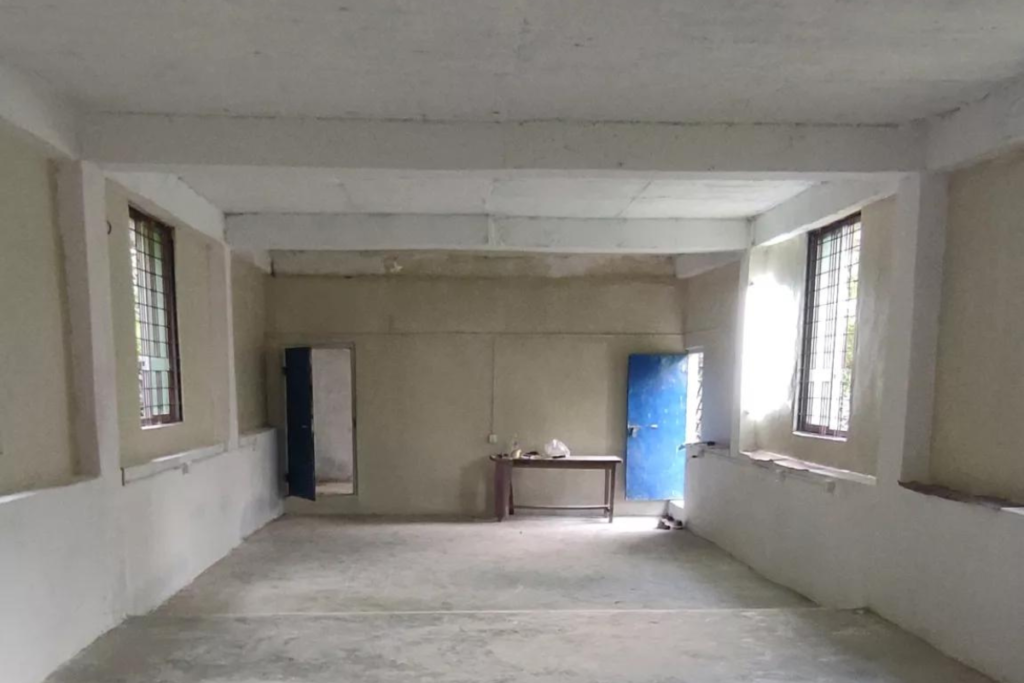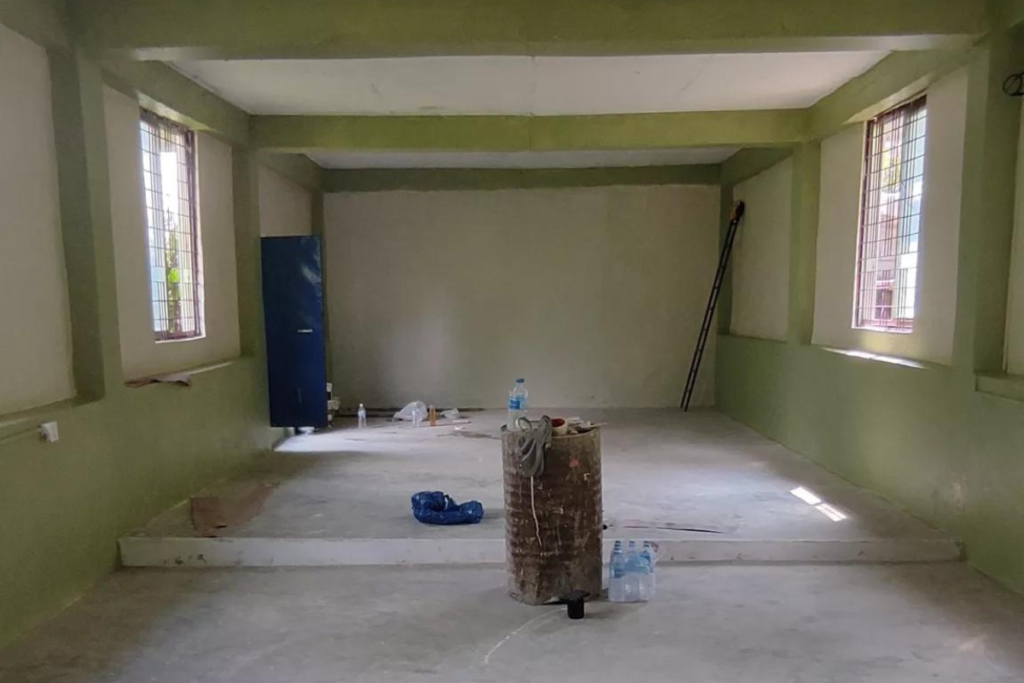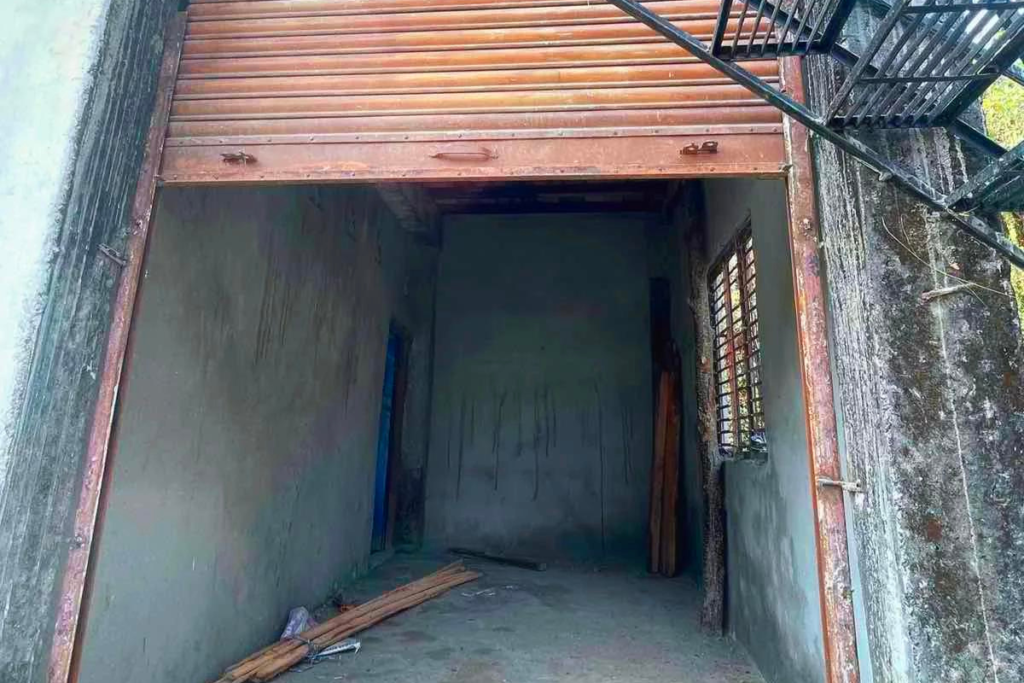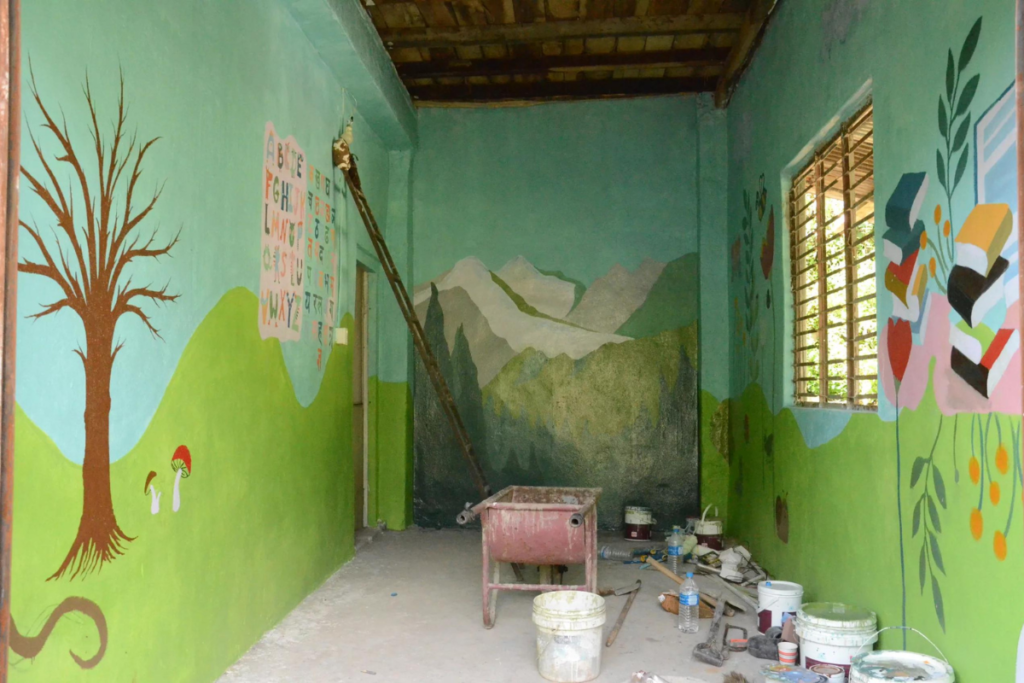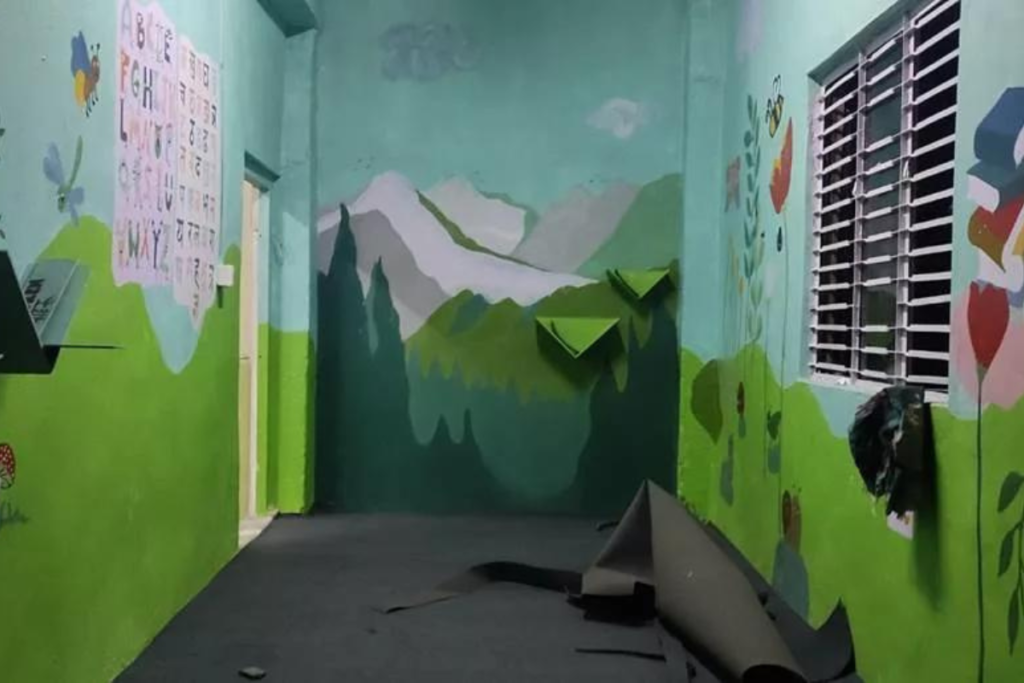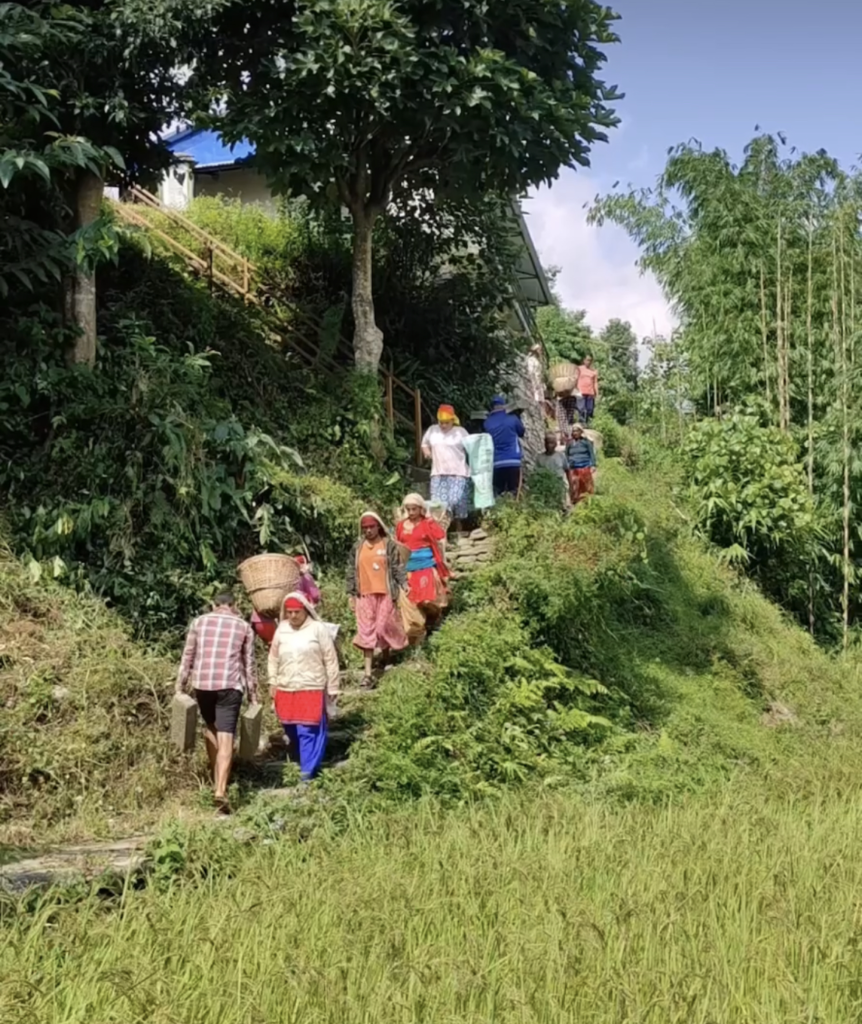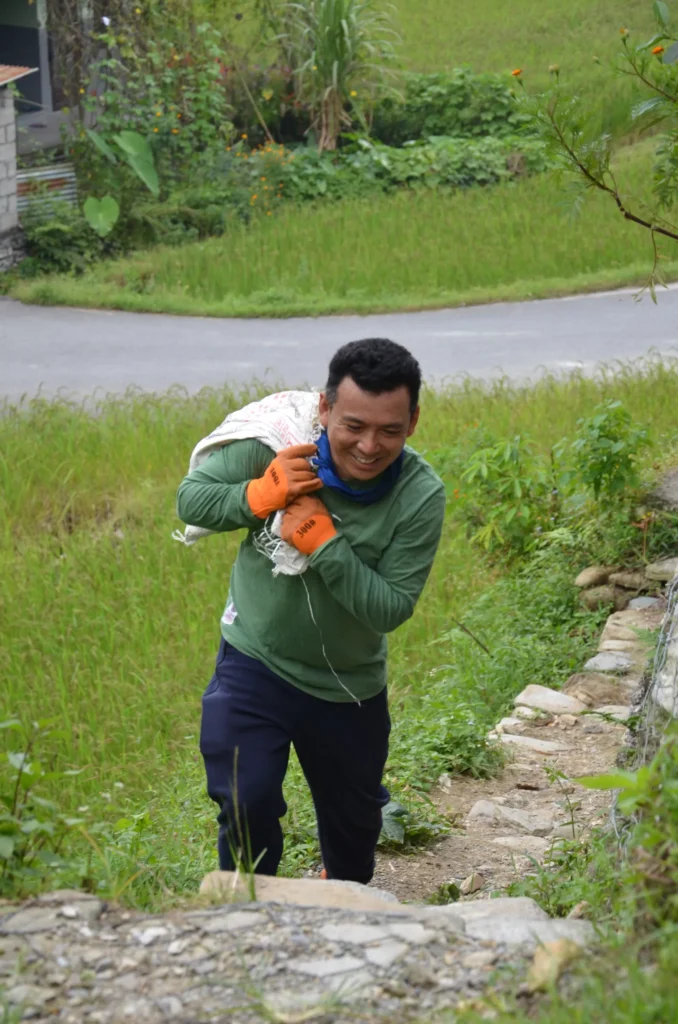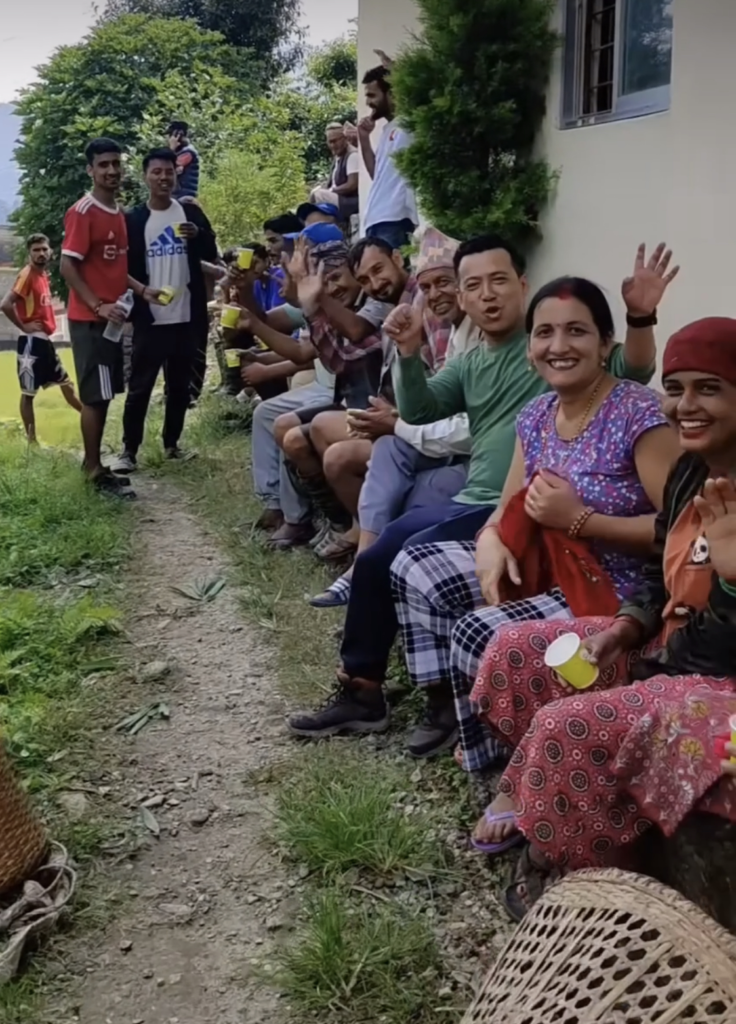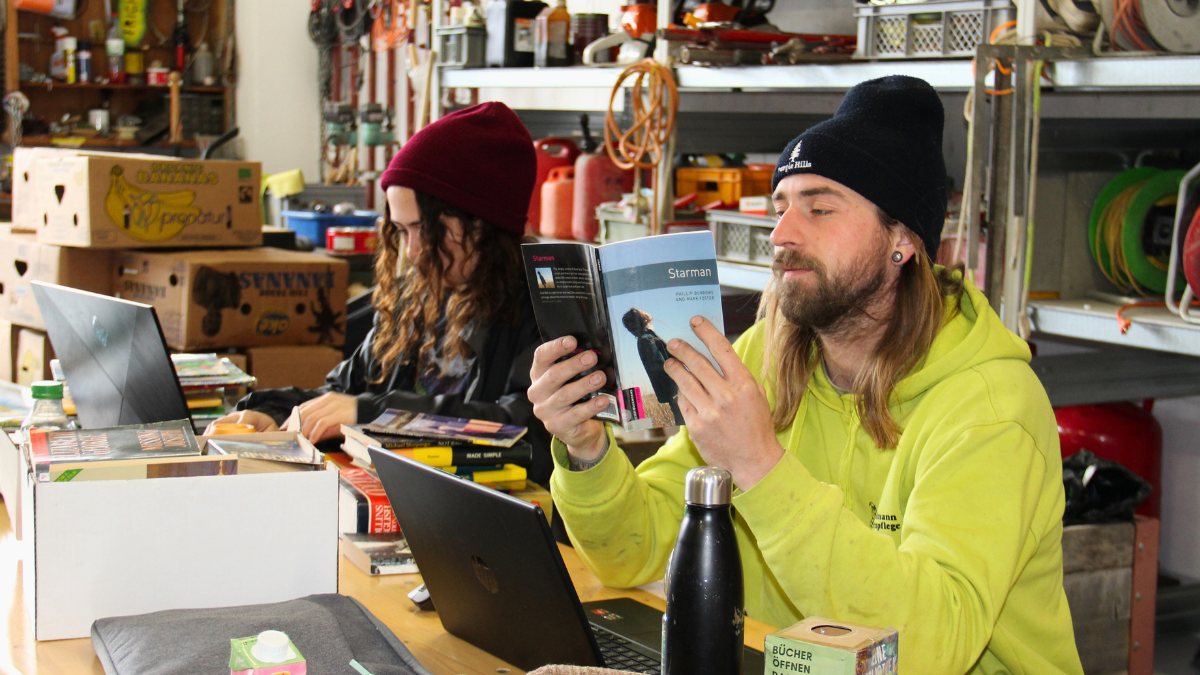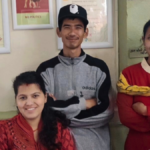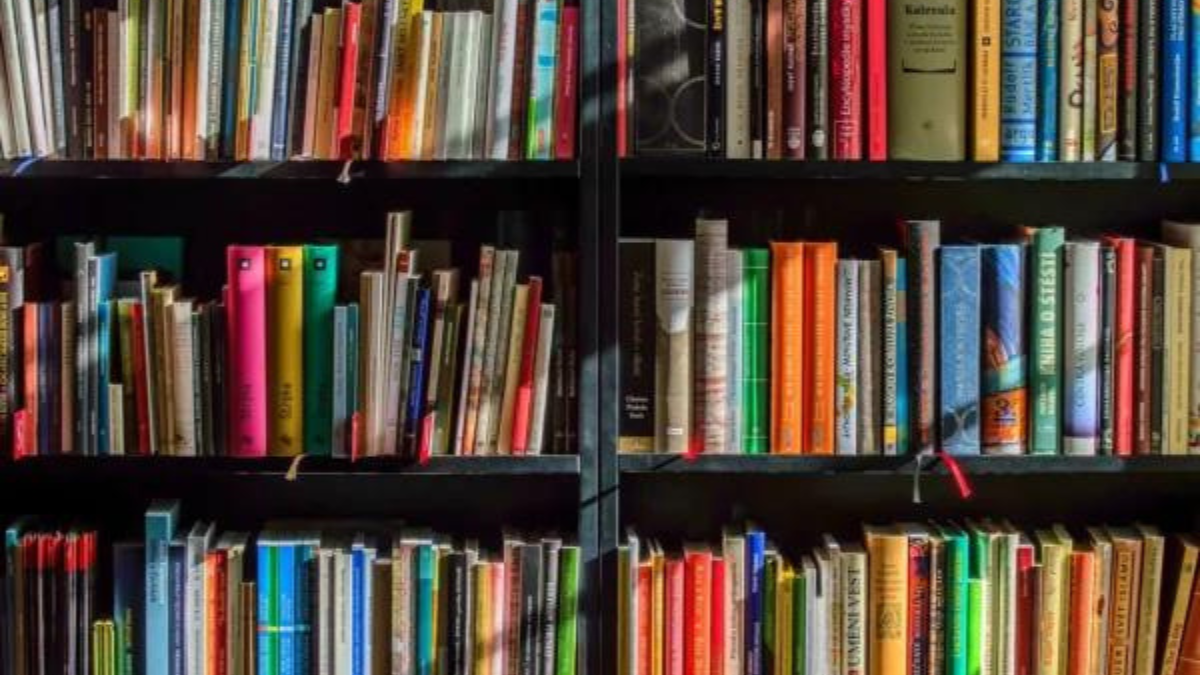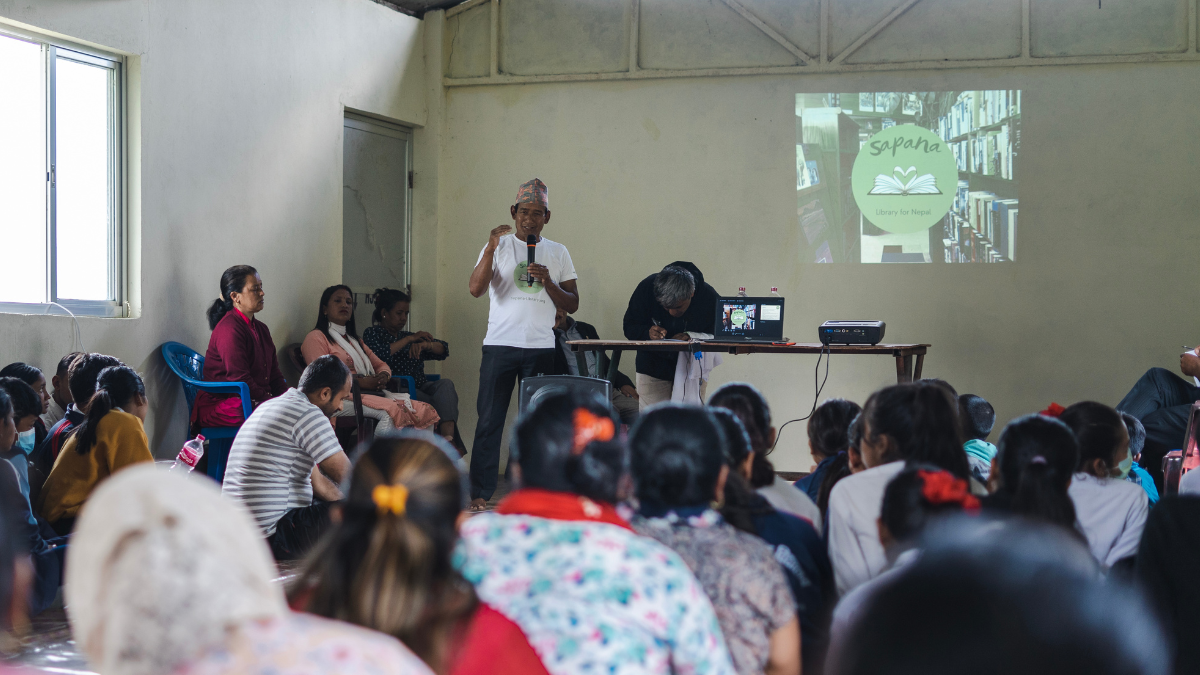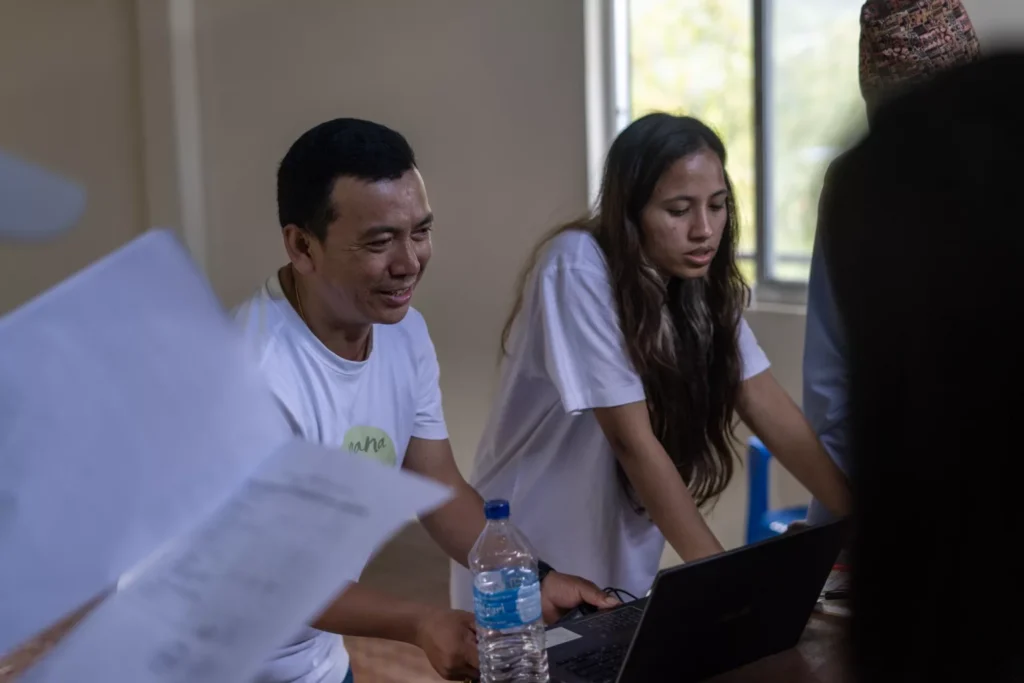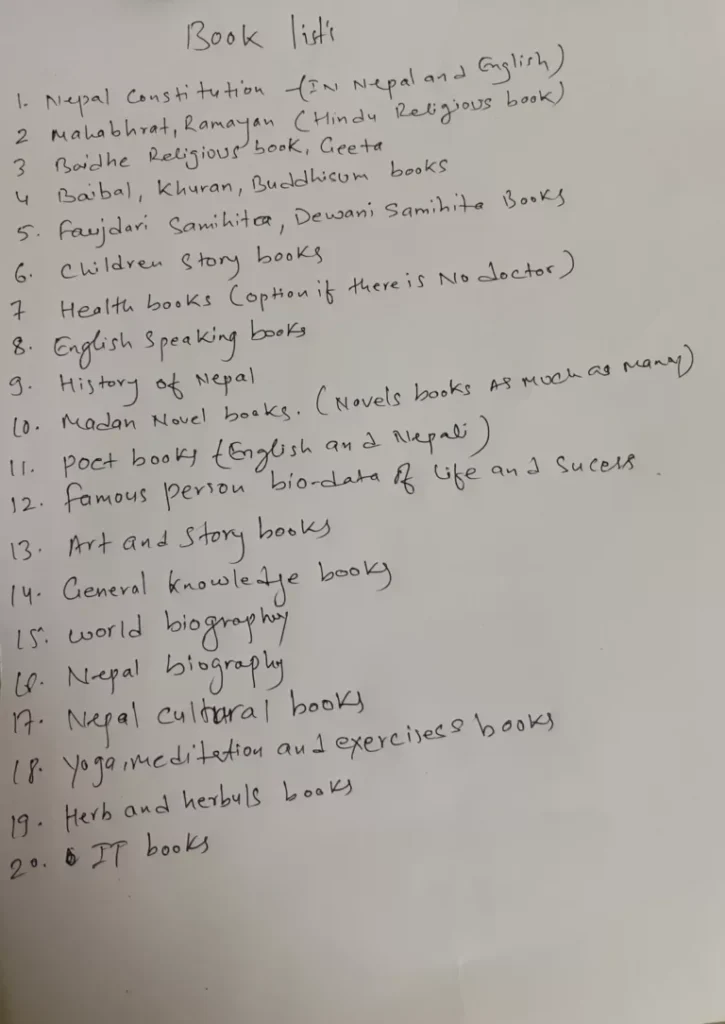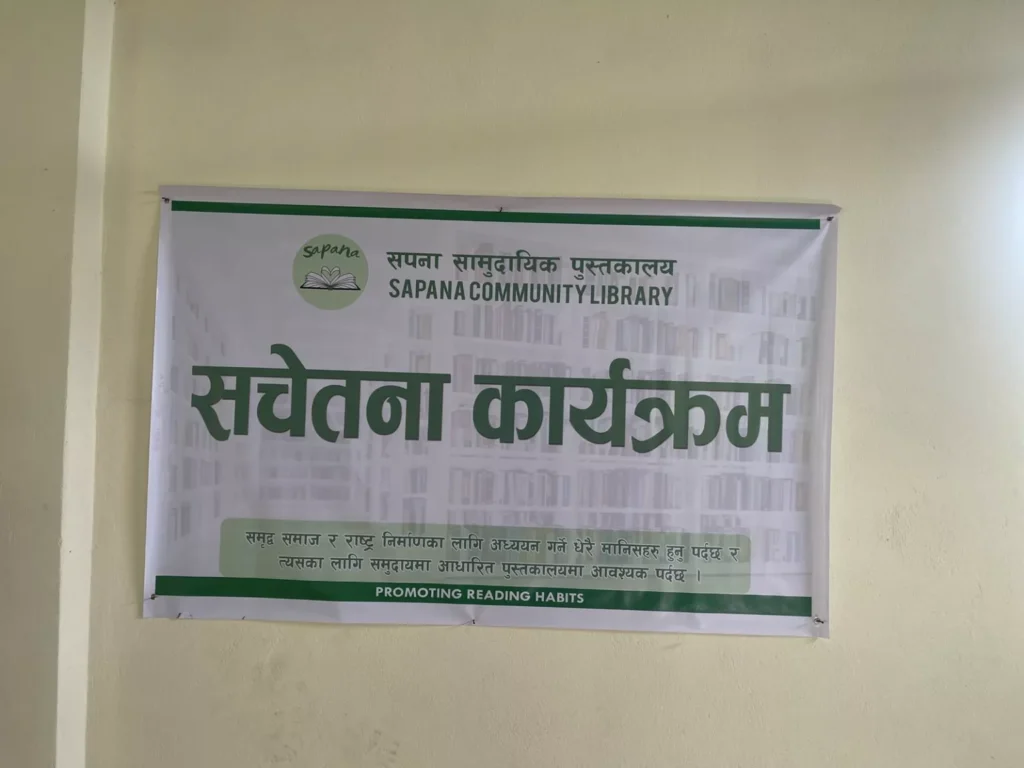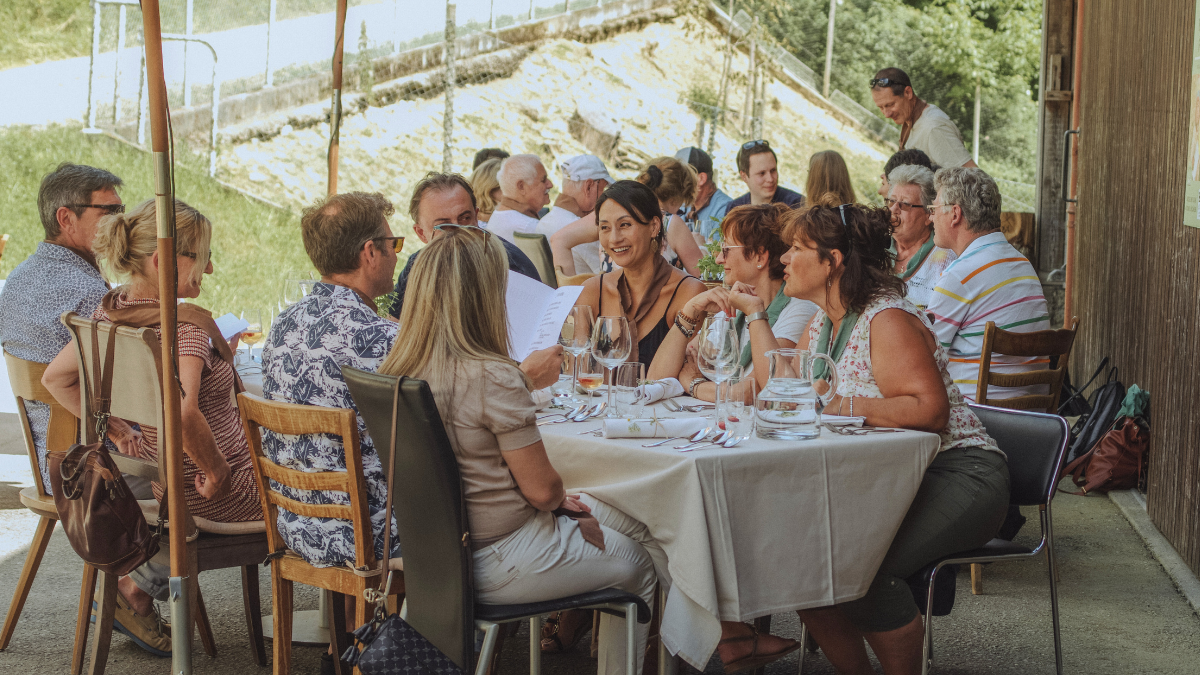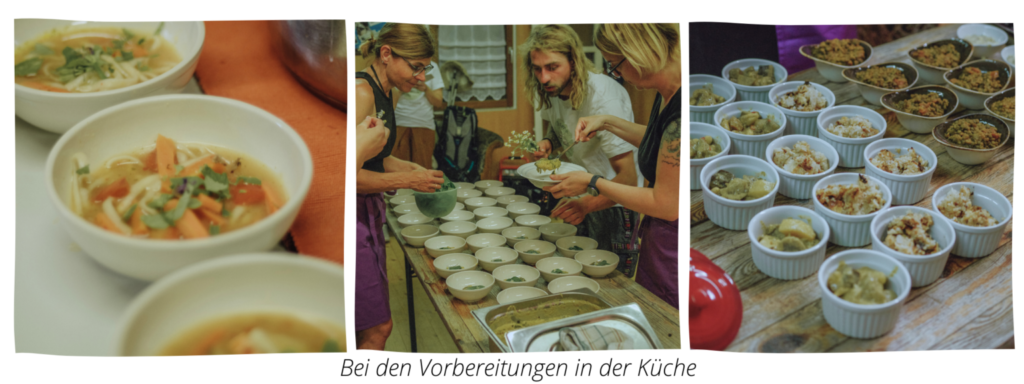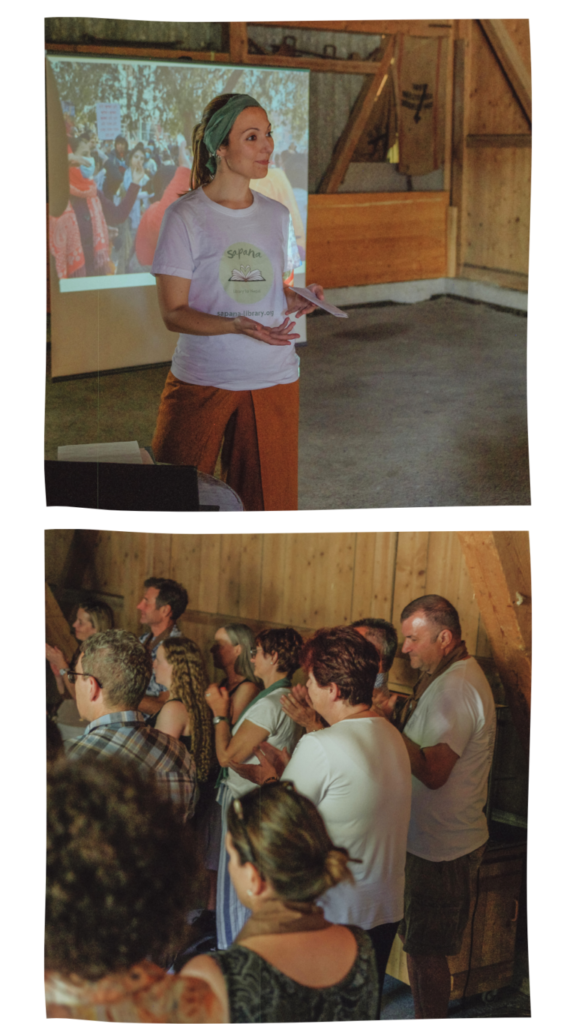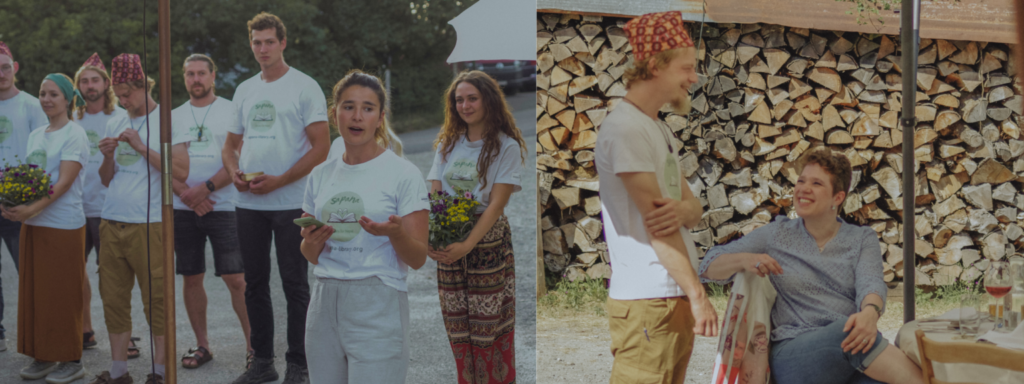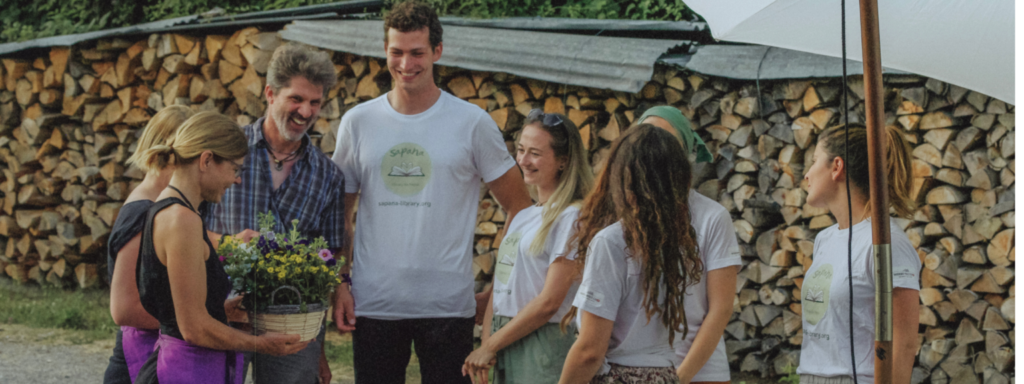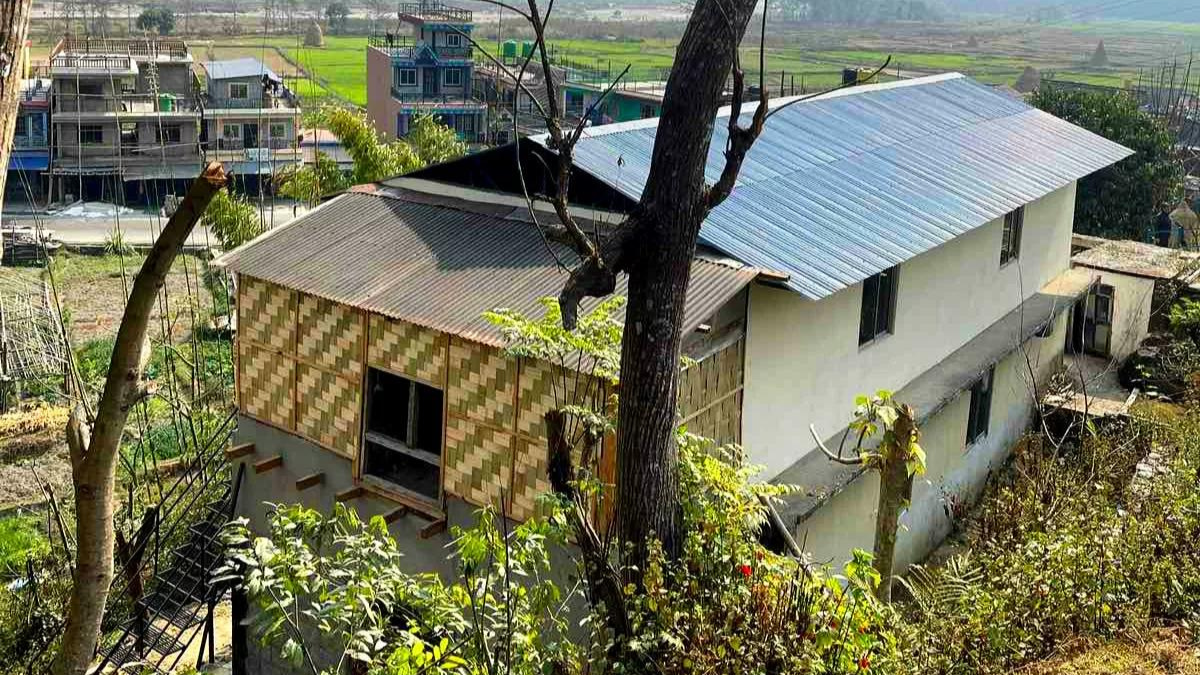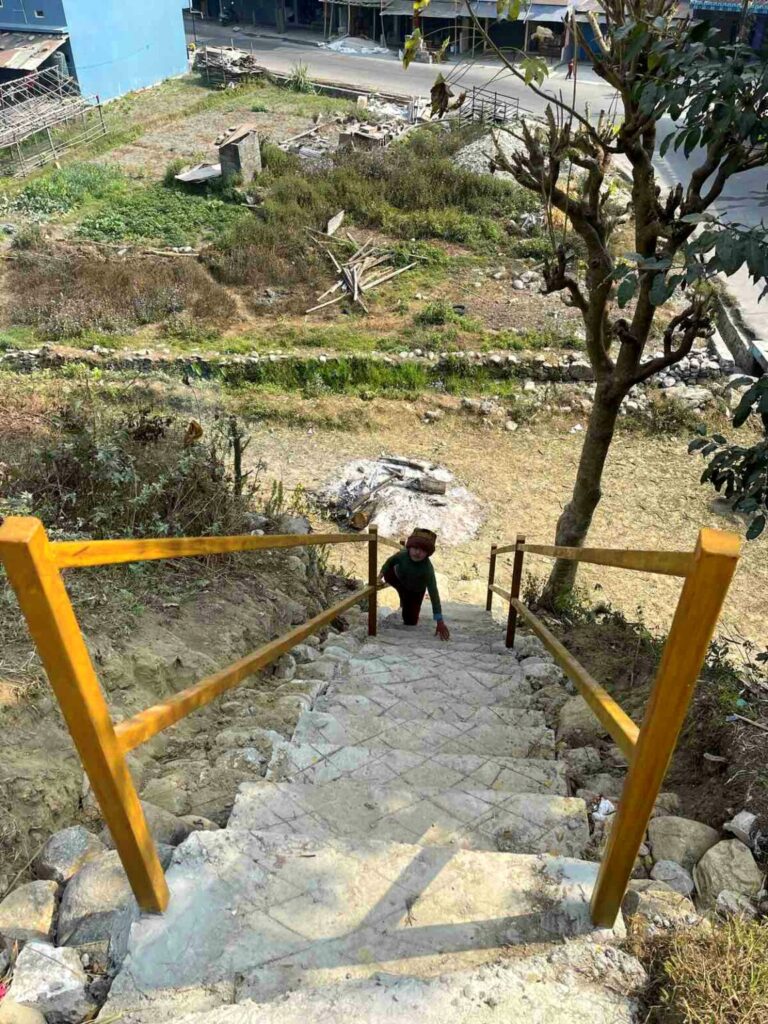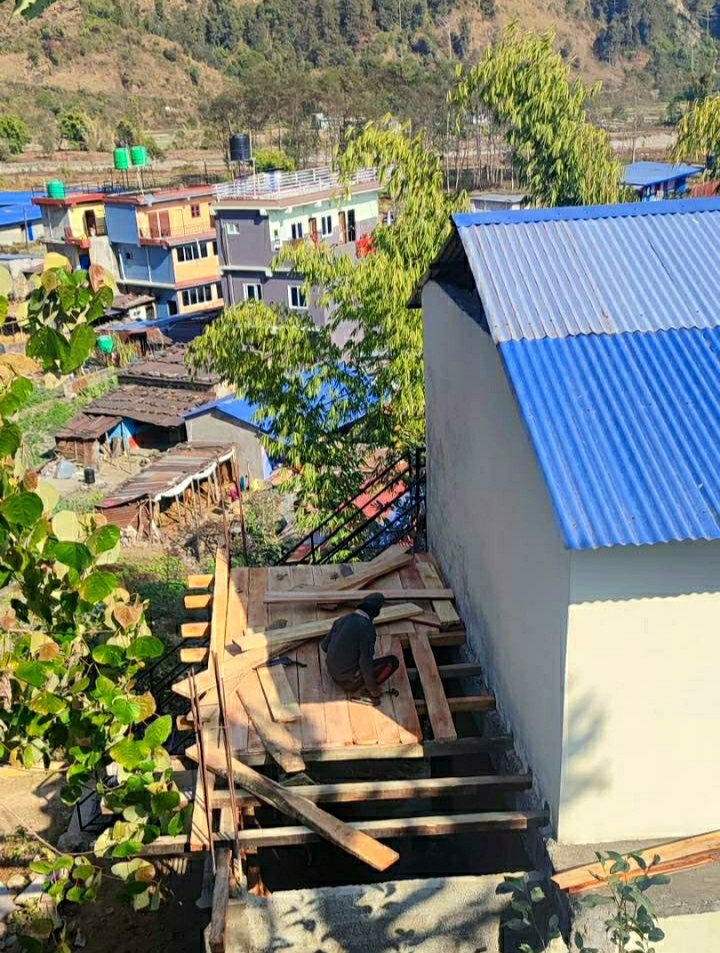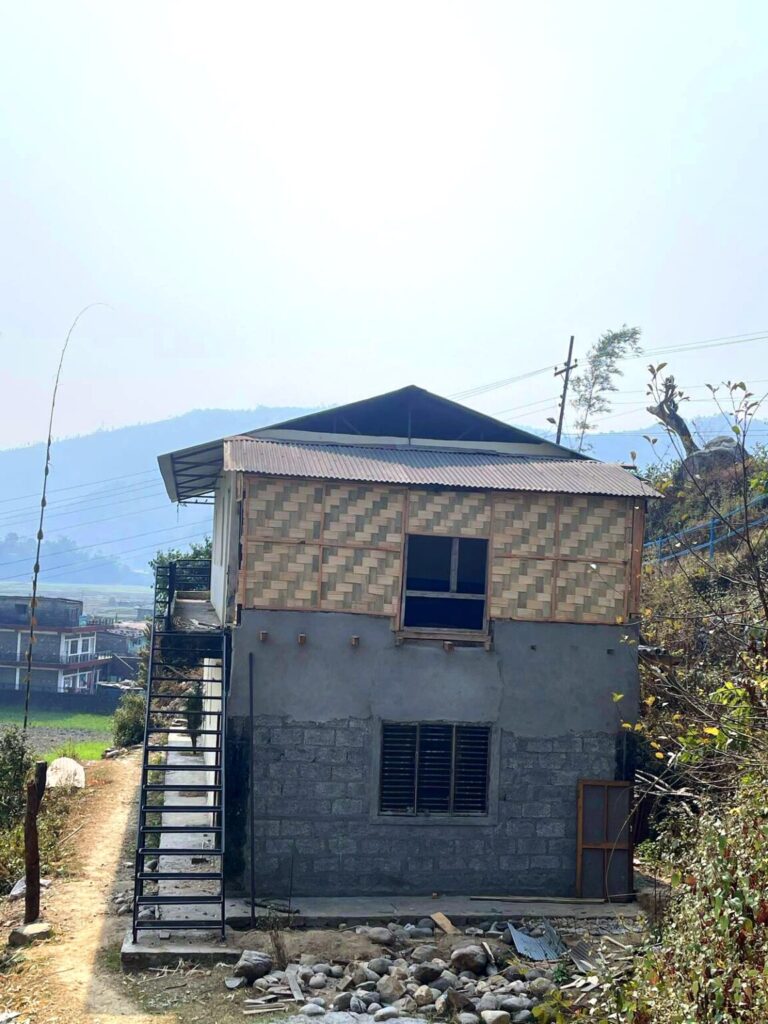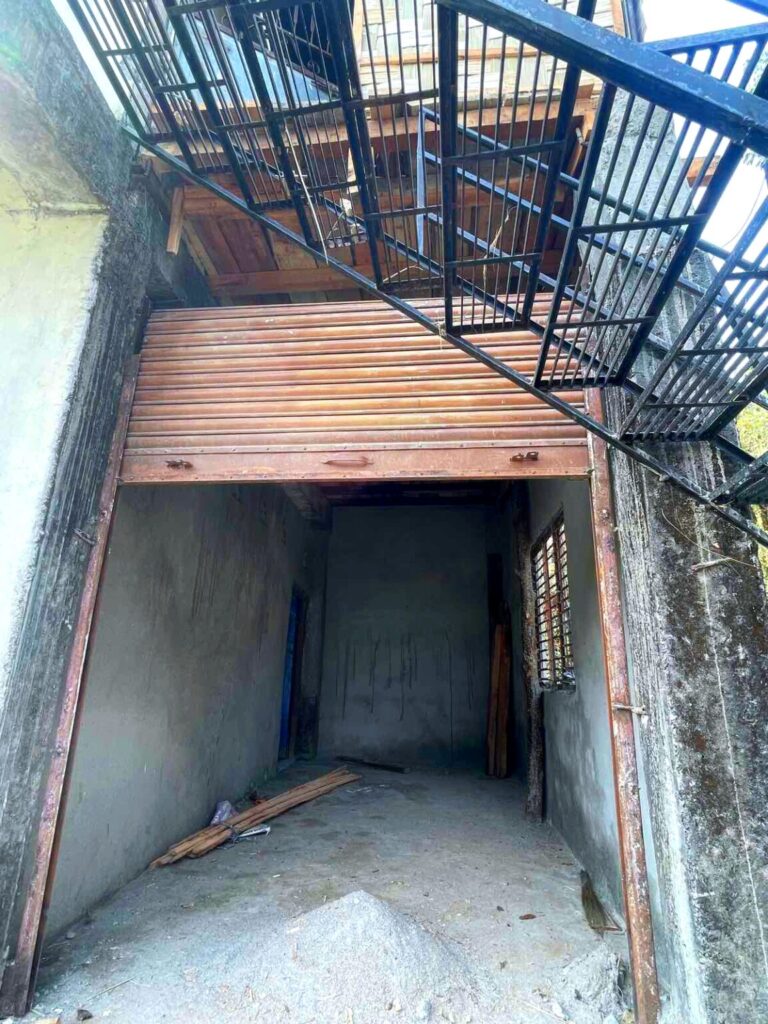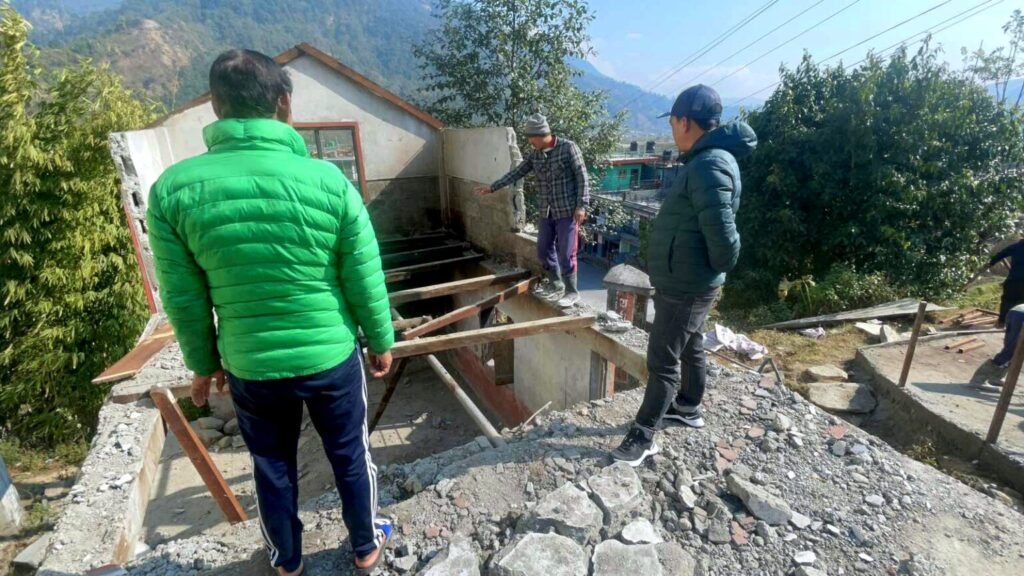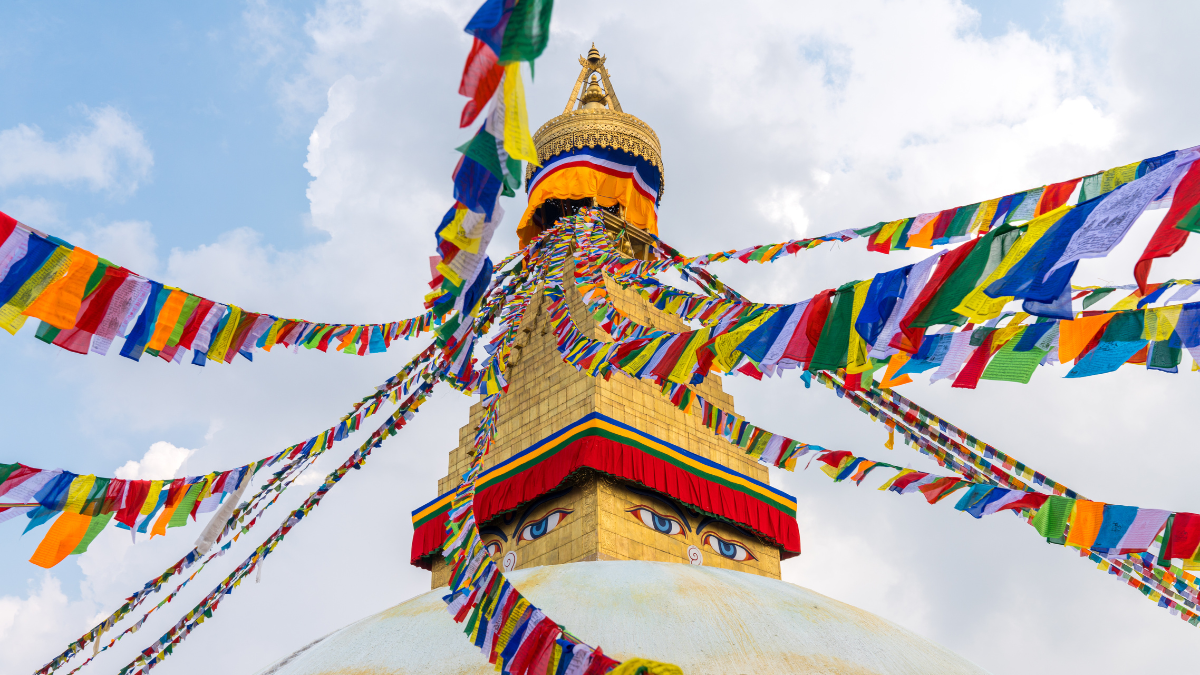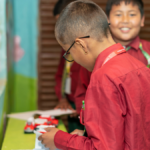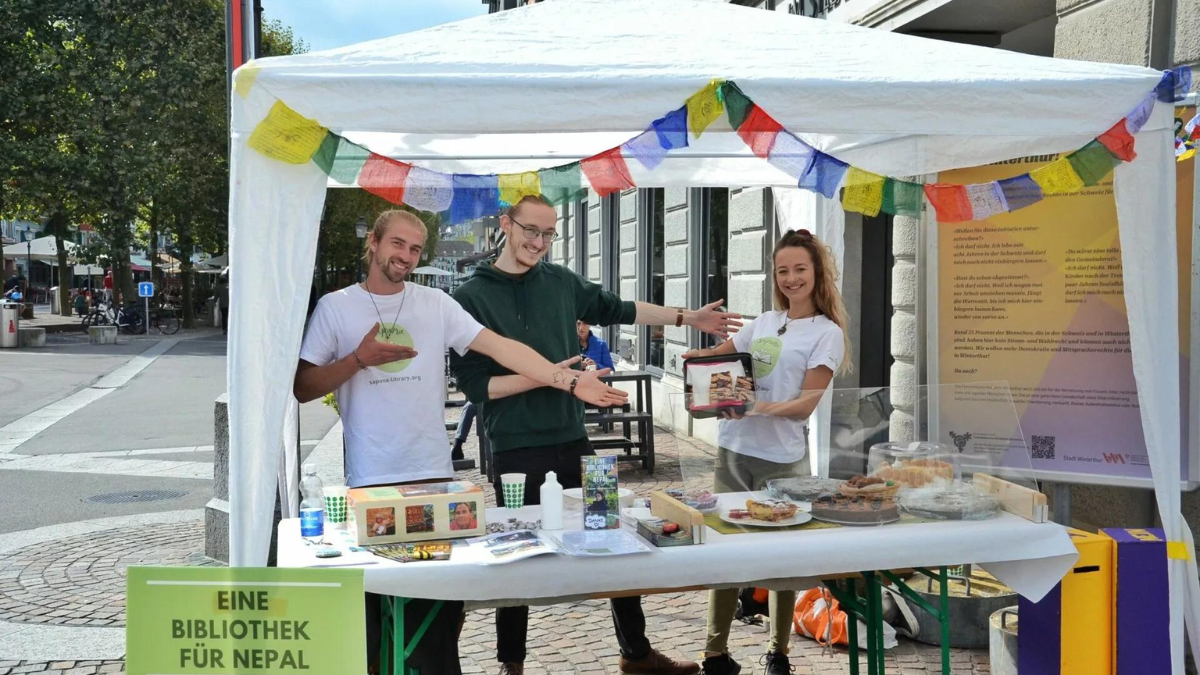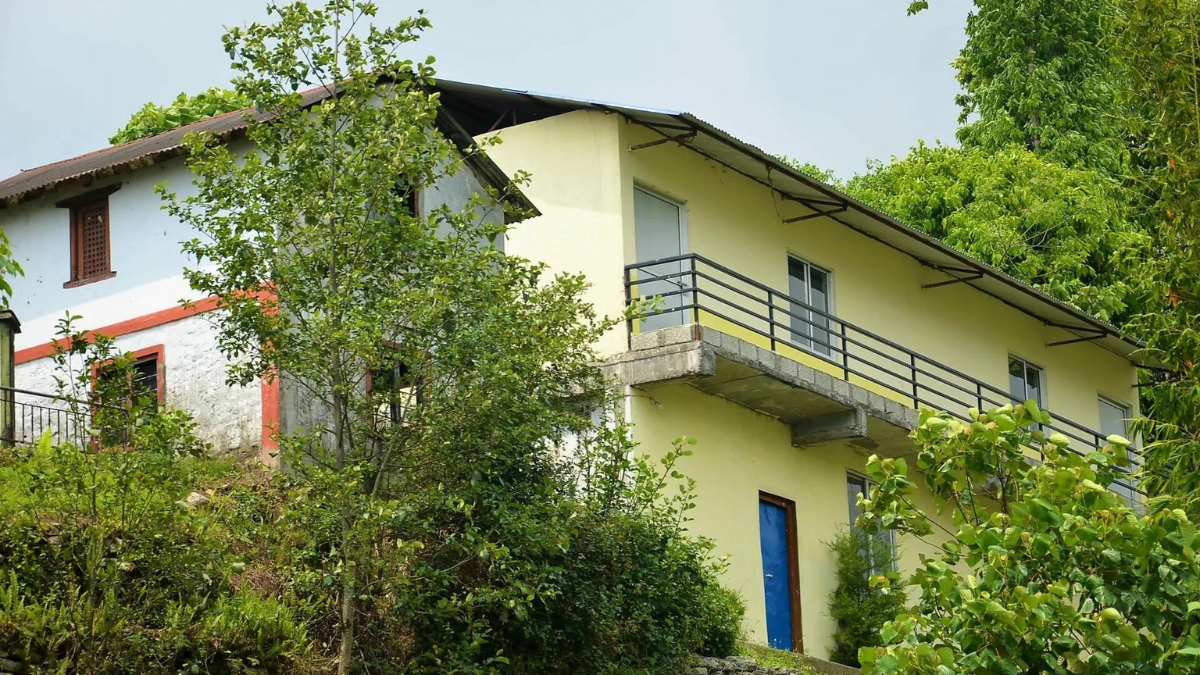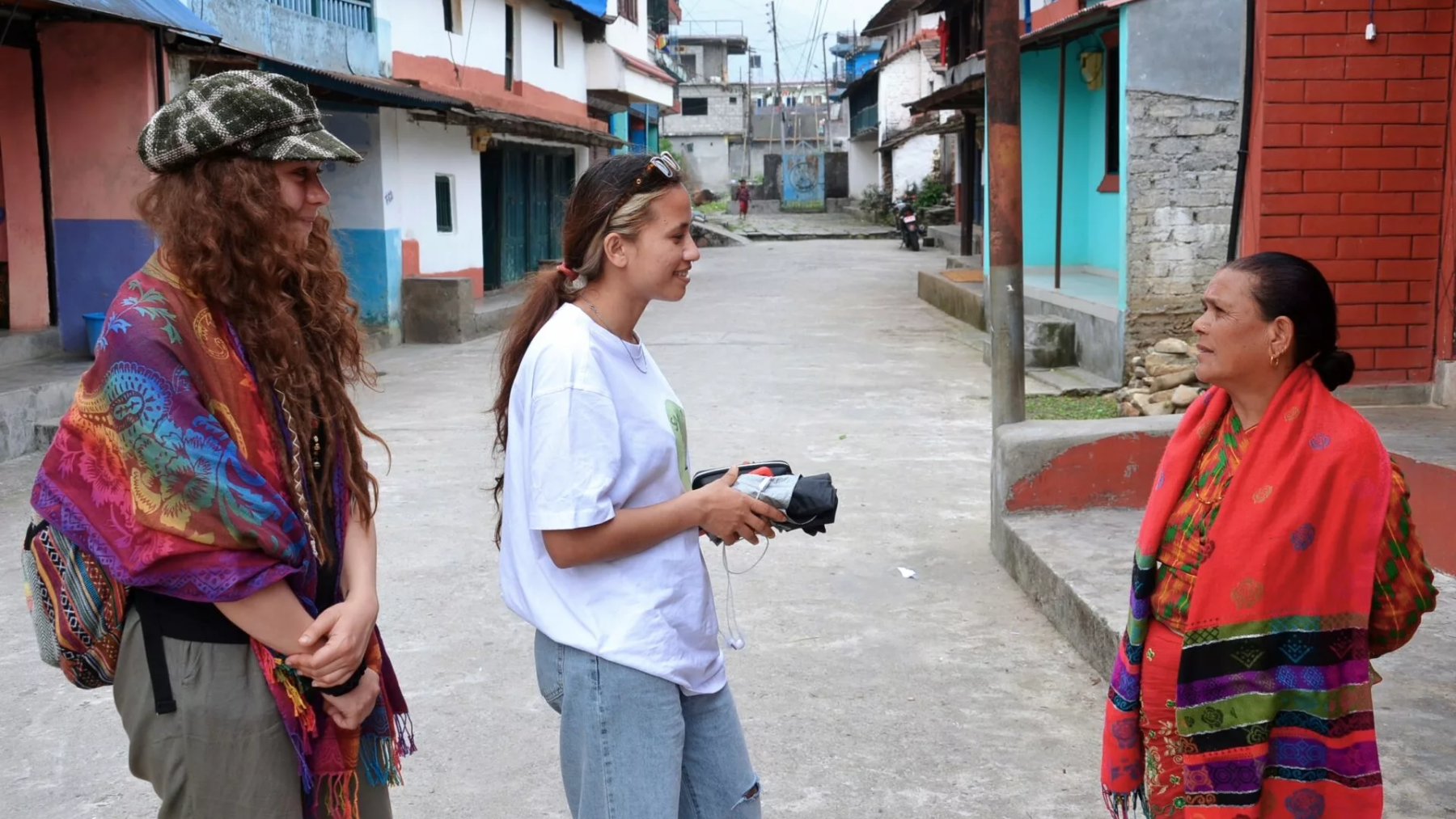Entwicklungsarbeit: Unsere Fortschritte in der Sapana Library
Wenn Du den Begriff Entwicklungsarbeit hörst, denkst Du vielleicht an grosse Projekte, internationale Organisationen oder langfristige Strategien. Doch Entwicklungsarbeit kann auch ganz klein beginnen: mit Gesprächen, mit Aufräumen, mit Reparaturen, mit Hausbesuchen, mit Zuhören.
Während seiner Zeit in der Sapana Community Library in Khoramukh durfte unser nepalesisches Teammitglied Sushil genau das erleben: Entwicklungsarbeit als lebendigen, menschlichen Prozess. Dieser Beitrag soll Dir aus seiner Sicht zeigen, wie vielfältig, herausfordernd und gleichzeitig erfüllend Entwicklungsarbeit sein kann – besonders in einer ländlichen Region Nepals, wo jede Veränderung direkt sichtbar wird.
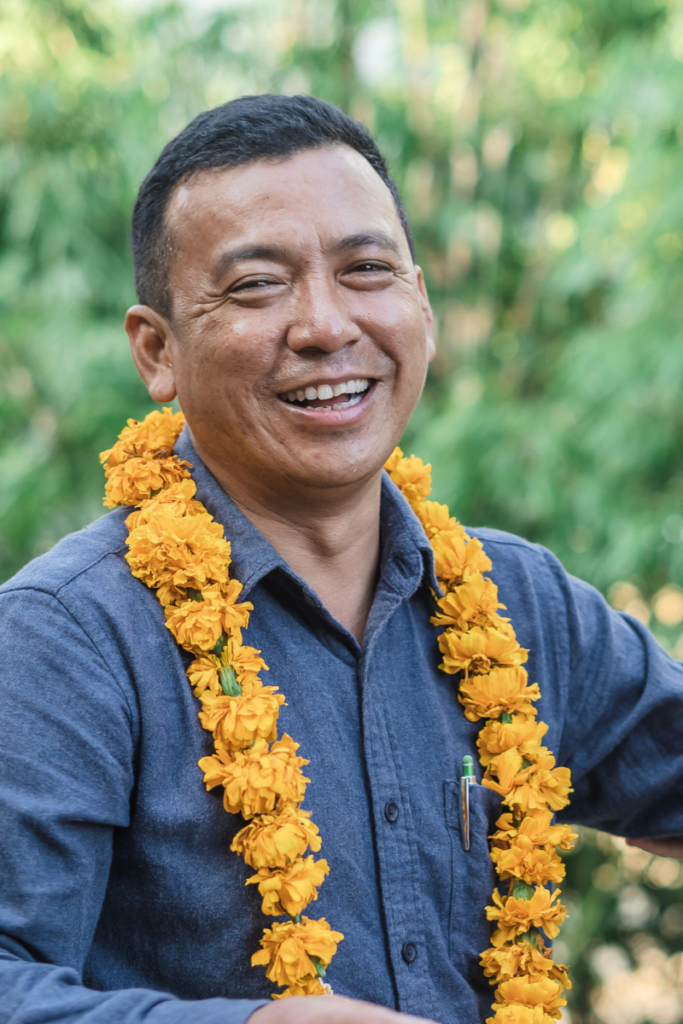
Entwicklungsarbeit in Nepal: Vorbereitung und erster Einstieg
Mein Arbeitsplan stand bereits fest, bevor ich in Khoramukh ankam. Ich wusste, welche Aufgaben auf mich zukommen würden und doch wusste ich nicht, wie sehr mich die Arbeit vor Ort fordern und gleichzeitig wachsen lassen würde.
Bevor ich loslegte, stellte ich mich mental auf meine Aufgaben ein, sortierte offene Themen und bereitete mich darauf vor, flexibel zu bleiben. Denn das ist ein wichtiger Teil von Entwicklungsarbeit: Es kommt selten so, wie man es plant.
Schon kurz nach meiner Ankunft traf ich Santosh, den Coach des Bibliotheksteams. Wir sprachen viel über seine Arbeit, über die Statuten der Bibliothek und darüber, wie wir gemeinsam die Bibliothek wirkungsvoller machen können. Ein wichtiges Thema war die Frage, wie wir junge Menschen stärker ansprechen können, damit sie nicht aus Mangel an Perspektiven in die Stadt ziehen. Genau solche Gespräche zeigen, wie strategisch und gleichzeitig alltäglich Entwicklungsarbeit sein kann.
Entwicklungsarbeit im Dorf: Zuhören als wichtigster Schritt
Einige Tage nach meiner Ankunft begann ich, die umliegenden Dörfer zu besuchen: Rivan, Lumre, Gairigaun und weitere. Ich wollte wissen, wie die Menschen über Bücher denken, was sie über Bildung sagen und wie sie die Bibliothek wahrnehmen.
Dabei wurde mir klar: Entwicklungsarbeit beginnt nicht in einem Büro, sondern im Gespräch zwischen Menschen.
Viele kannten die Bibliothek, aber nicht alle wussten, was sie anbietet. Manche erzählten, wie wertvoll Bildung für ihre Kinder ist. Andere erklärten, dass sie wegen Arbeit, Haushalt oder fehlender Lesegewohnheiten kaum Zeit für Bücher finden. Diese Gespräche öffneten Türen und helfen uns, die Bedürfnisse der Dorfbewohnenden besser zu kennen.
Das war für mich einer der wichtigsten Momente: Zu sehen, wie viel Entwicklungsarbeit durch echtes Zuhören möglich wird.
Entwicklungsarbeit konkret: Was wir angepackt und erreicht haben
1. Ein neues Dach für die Kinderabteilung
Während der Regenzeit drang immer wieder Wasser durch das Dach der Kinderabteilung. Bücher wurden nass, die Farben lösten sich, die Kinder konnten den Raum nicht nutzen.
Darum haben wir:
– das Dach vollständig erneuert
– die Fenster ausgetauscht
– zwei zusätzliche Dächer bei den Eingängen angebracht
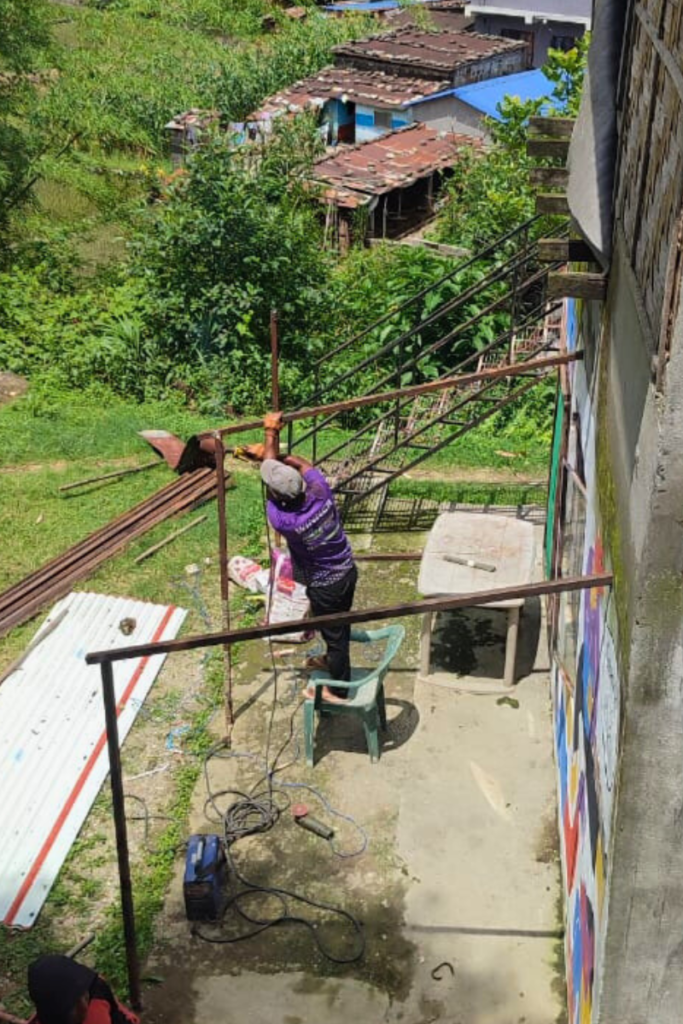
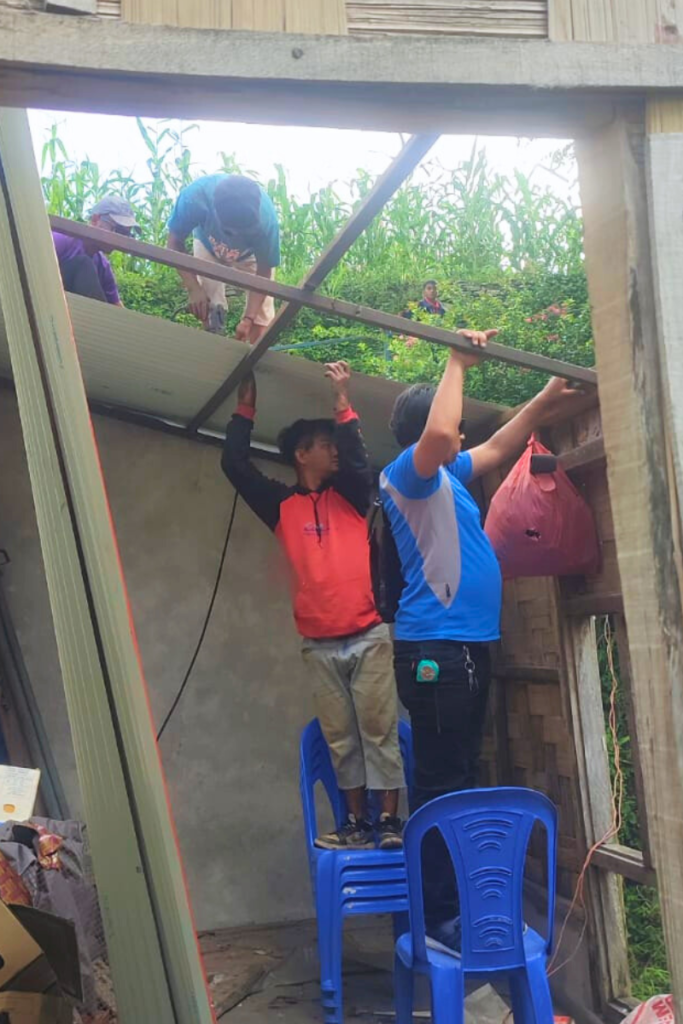
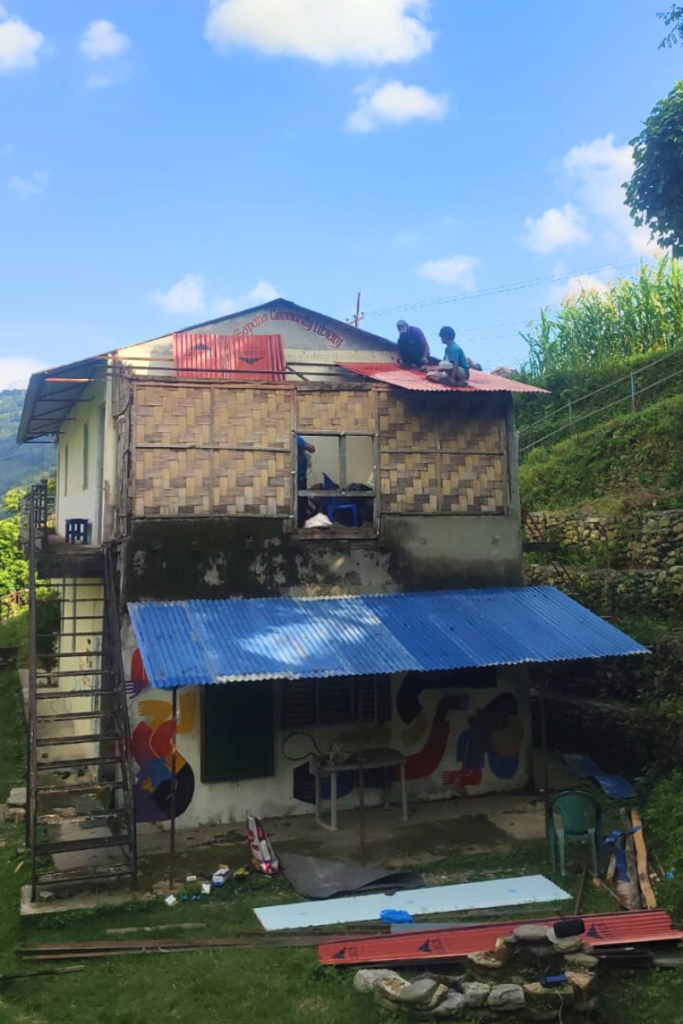
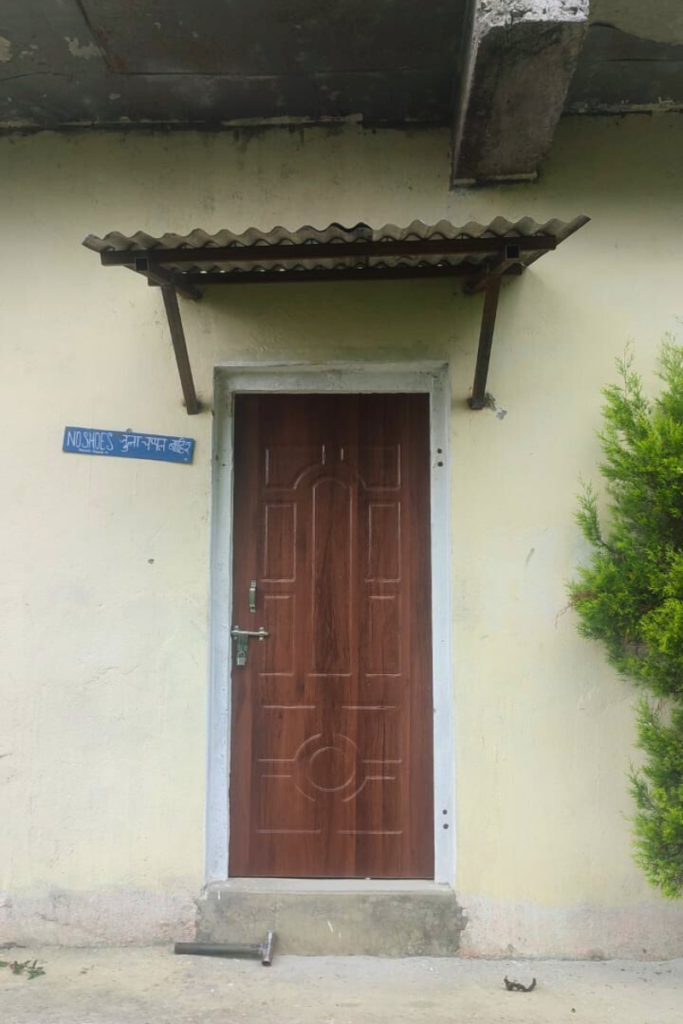
Das Resultat ist ein trockener, kindergerechter Raum, der wieder täglich genutzt wird. Entwicklungsarbeit heisst eben manchmal ganz simpel: ein Dach reparieren, damit Lernen überhaupt möglich ist.
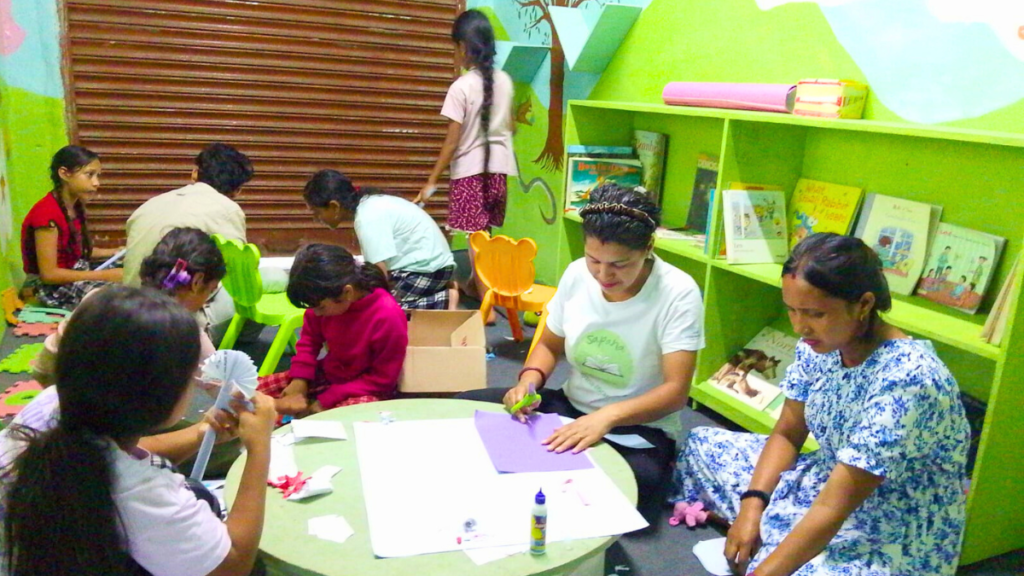
2. Eine Community Umfrage – um zu verstehen, was die Menschen brauchen
Damit Entwicklungsarbeit nicht an den Menschen vorbei geht, braucht es echte Daten und ehrliches Feedback. Deshalb führten wir eine 2-3 tägige Community Umfrage durch.
Wir sammelten:
– 30–40 vollständig ausgefüllte Fragebögen
– Eindrücke aus persönlichen Gesprächen
– Rückmeldungen zur Bibliothek
– Wünsche der Bewohnenden
Das Ziel: zu verstehen, wie die Bibliothek wirkt und was die Bevölkerung sich wünscht. Aus den Ergebnissen werden wir die nächsten Massnahmen ableiten.
Parallel dazu besuchte ich Lehrpersonen und motivierte sie, die Readers Clubs in den Schulen wieder zu aktivieren. Die Resonanz war positiv – die Schulen zeigten echtes Interesse.
3. Analyse der Social Media Nutzung in Khoramukh
Um die Menschen besser zu erreichen, wollten wir herausfinden, welche Kanäle sie überhaupt nutzen.
Das Ergebnis:
– Facebook ist das wichtigste Medium
– TikTok wird zunehmend beliebt, vor allem bei Jugendlichen
– Lokales Radio bleibt ein relevanter Informationskanal
Damit können wir zukünftig gezielt eine Social Media Kampagne aufbauen – nicht daneben, sondern genau dorthin, wo die Menschen wirklich sind.
4. Die Qualität der Bibliotheksarbeit verbessern
Ein wichtiger Aspekt meiner Entwicklungsarbeit war, zu prüfen, wie das Team arbeitet und wie wir es stärken können.
Im Fokus standen:
– wie die Bibliothekar:innen ihren Alltag organisieren
– wie Santosh seine Rolle als Coach ausfüllt
– wo Motivation und Struktur fehlen
– wo Unterstützung nötig ist
Wir führten ehrliche Gespräche über Sauberkeit, Verantwortlichkeiten und Prioritäten. Diese Auseinandersetzung ist wichtig, denn ohne ein motiviertes, gut begleitetes Team kann keine Bibliothek langfristig wirken.
Dazu kam eine neue Gewohnheit, die wir eingeführt haben: 30 Minuten tägliche Lesezeit für das Team. Denn wer für Lesen begeistern will, muss selbst lesen.
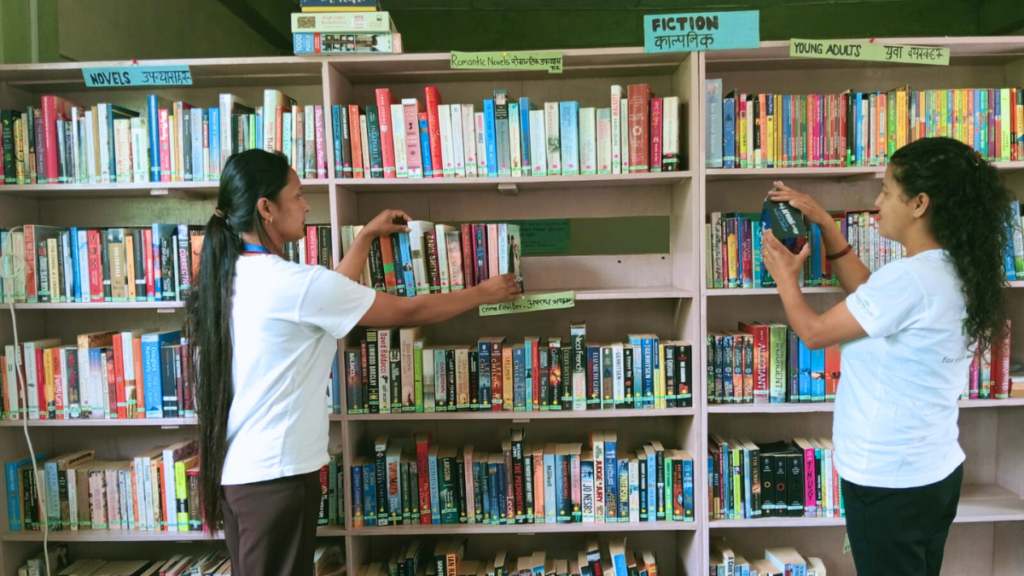
5. Verbesserung der Sicherheit: kleine Dinge, die wichtig sind
Ein weiteres praktisches Thema war das Anschliessen des Handys an die Sicherheitskamera der
Bibliothek. Das klingt klein, aber Sicherheit ist ein wichtiger Aspekt der Betriebsführung.
Jetzt kann das Team jederzeit überwachen, ob alles in Ordnung ist, besonders abends oder bei
Stromausfällen.
6. Die Bücherspende Box neu durchdacht
Unsere Book Donation Box brachte anfangs kaum Ergebnisse. Statt das Projekt vorschnell als gescheitert zu betrachten, analysierten wir die Situation und passten unseren Ansatz an: Wir verlegten die Box an einen besser frequentierten Ort, machten sie sichtbarer und entwickelten gemeinsam neue Ideen, um Menschen stärker anzusprechen. Dieser Prozess aus Ausprobieren, Anpassen und Weiterentwickeln ist ebenfalls Entwicklungsarbeit – lernen, flexibel reagieren und konsequent weitermachen.
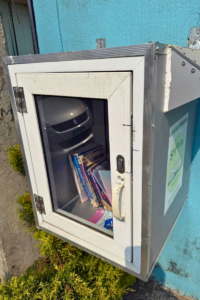
7. Haustürbesuche: Wissen verbreiten, Vertrauen stärken
Während meiner Zeit in Nepal wurden weiterhin Haustürbesuche durchgeführt. Wir erreichten hunderte Haushalte und sprachen mit Menschen über:
– die Bedeutung von Lesen
– die Angebote der Bibliothek
– die Vorteile für Kinder und Erwachsene
Viele erzählten, dass sie noch nie eine Bibliothek besucht haben. Andere sagten, dass sie sich schämen, weil sie nicht lesen können. Einige waren überrascht zu hören, dass die Bibliothek kostenlos und für alle offen ist.
Diese Besuche sind eine der stärksten Formen der Bildungs- und Entwicklungsarbeit: Sie schaffen Verbindung, Verständnis und Vertrauen.
8. Neues Schild: Mehr Sichtbarkeit, mehr Wirkung
Um den Zugang zur Bibliothek weiter zu erleichtern, wurde ein Leitschild an der Straße aufgestellt, das den Weg klar sichtbar markiert. Solche Wegweiser tragen dazu bei, Aufmerksamkeit zu schaffen, Orientierung zu verbessern und spontane Besuche zu ermöglichen. Durch die erhöhte Sichtbarkeit können mehr Menschen auf die Bibliothek aufmerksam werden – ein einfacher, aber wirkungsvoller Schritt, um Reichweite und Nutzung nachhaltig zu stärken.
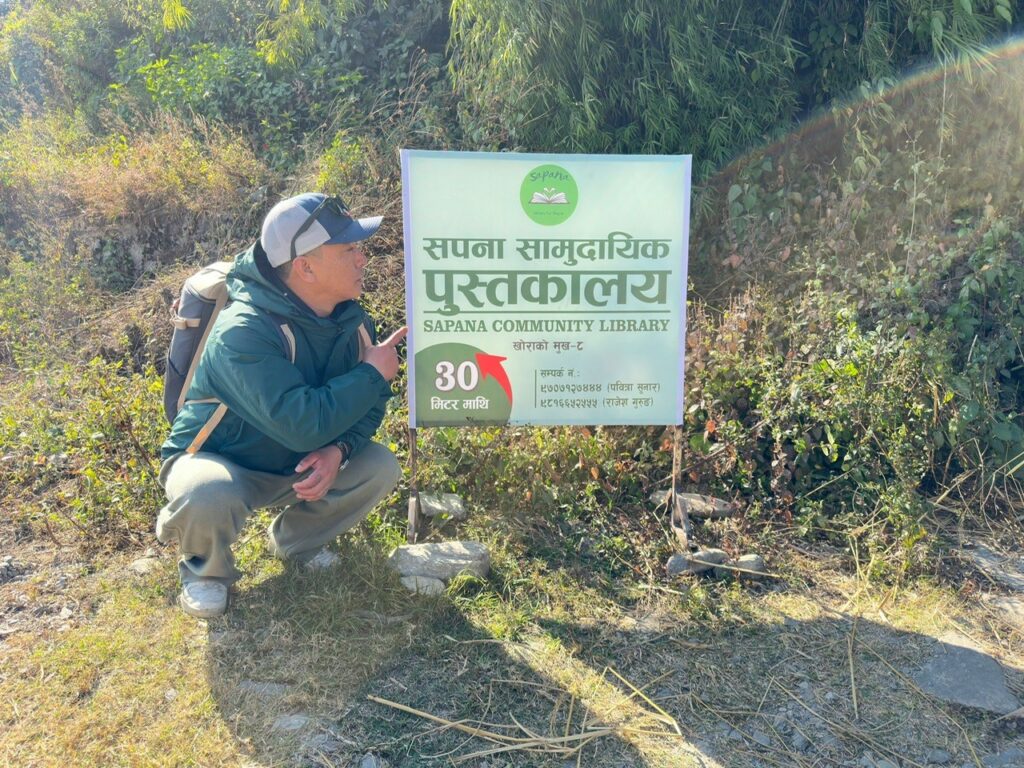
Was ich durch Entwicklungsarbeit in Nepal gelernt habe
Gegen Ende meines Aufenthalts sprach ich viel mit dem Team über Sauberkeit, Motivation und langfristige Veränderungen.
Ich habe gelernt, dass:
– Veränderung Zeit braucht
– kleine Schritte grosse Wirkung haben
– Zuhören stärker verbindet als jeder Vortrag
– Herausforderungen Teil des Prozesses sind
– man stolz sein darf, auch wenn nicht alles perfekt läuft
Fazit: Entwicklungsarbeit bedeutet, das Beste zu geben
Nach dieser intensiven Zeit kann ich sagen: Entwicklungsarbeit heisst nicht, perfekte Lösungen zu liefern. Sie heisst, das Beste zu geben – mit offenen Augen, offenem Herzen und der Bereitschaft, jeden Tag dazuzulernen.
Ich gehe aus dieser Zeit dankbar und erfüllt heraus, weil ich weiss: Ich habe mein Bestes gegeben.
Ähnliche Artikel
- Entwicklungsarbeit: Unsere Fortschritte in der Sapana Library
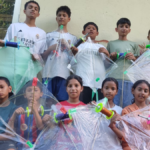
- Leseförderung in Nepal: Haustürbesuche der Sapana Library

- Die heutige Pracht der Bibliothek: Vielfalt und Dynamik im Blick
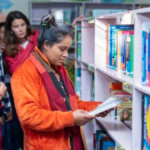
- Zwischen Buchstaben und Begeisterung: Unser November 2023 vor und nach der Bibliothekseröffnung
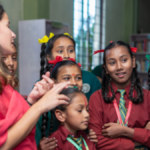
- Bunter Oktober 2023: Jacqueline’s Perspektive auf unseren Fortschritt

